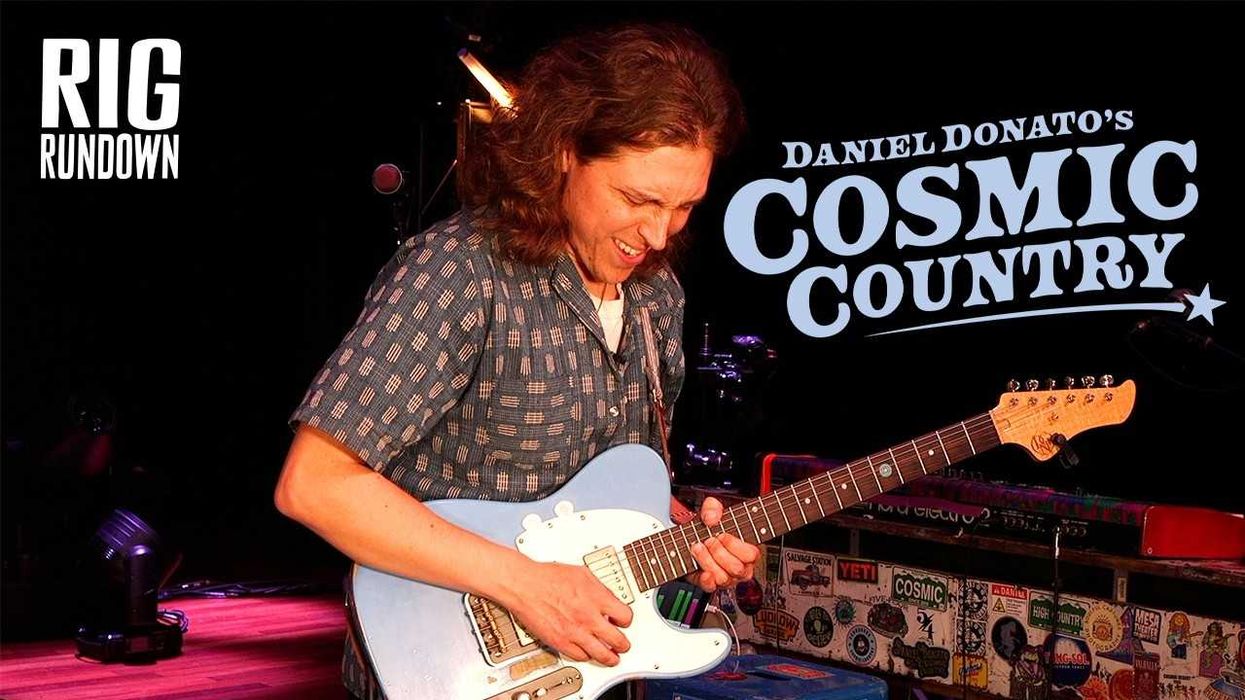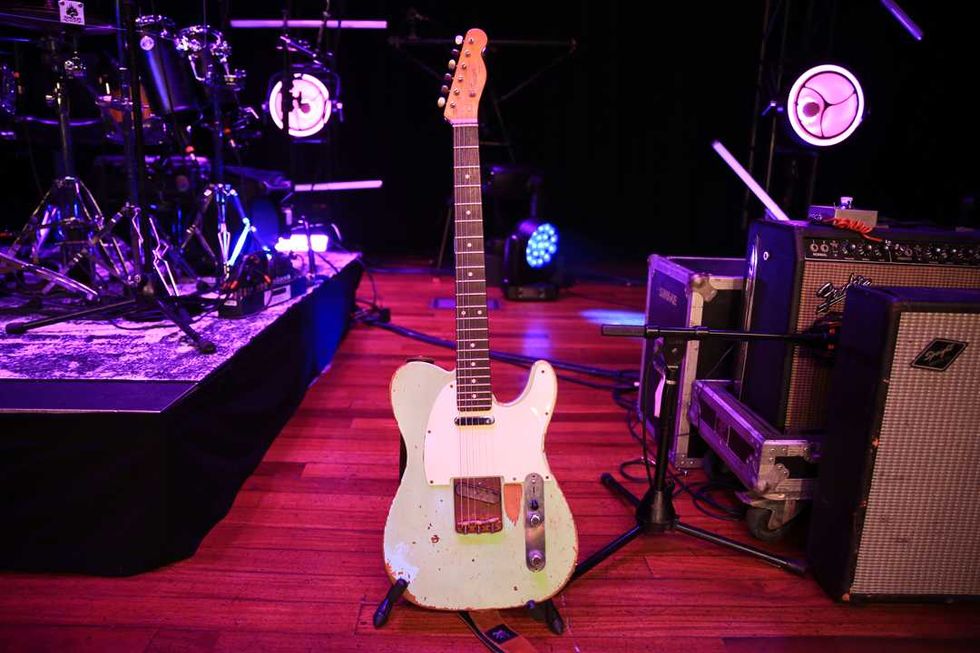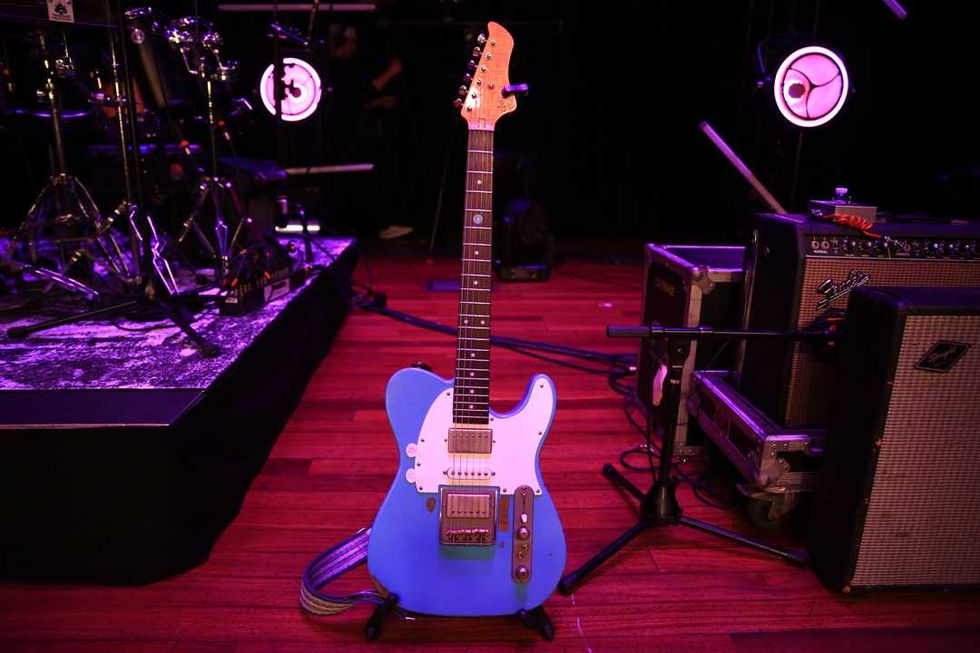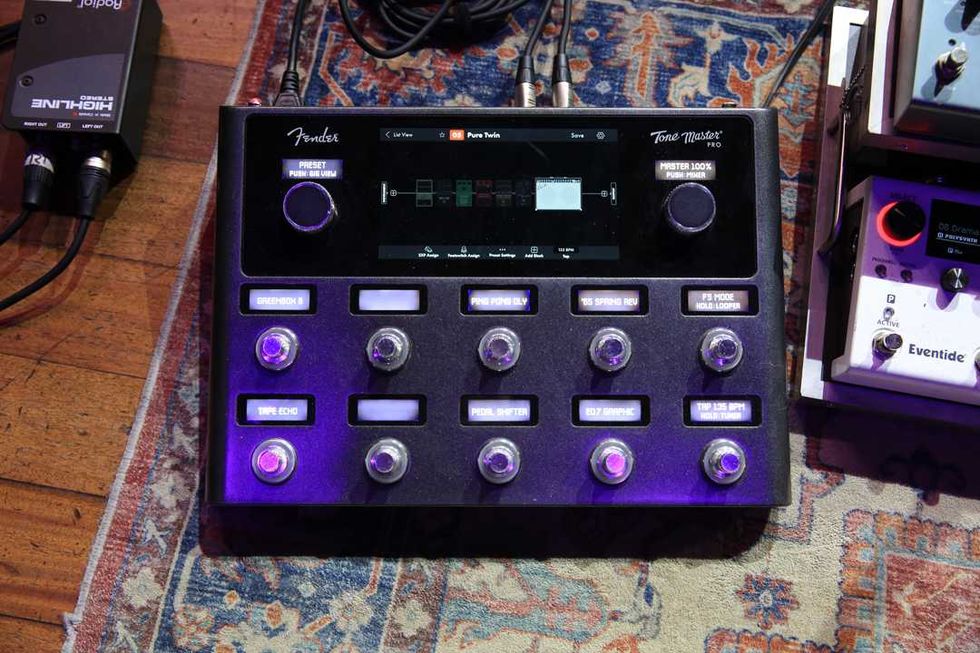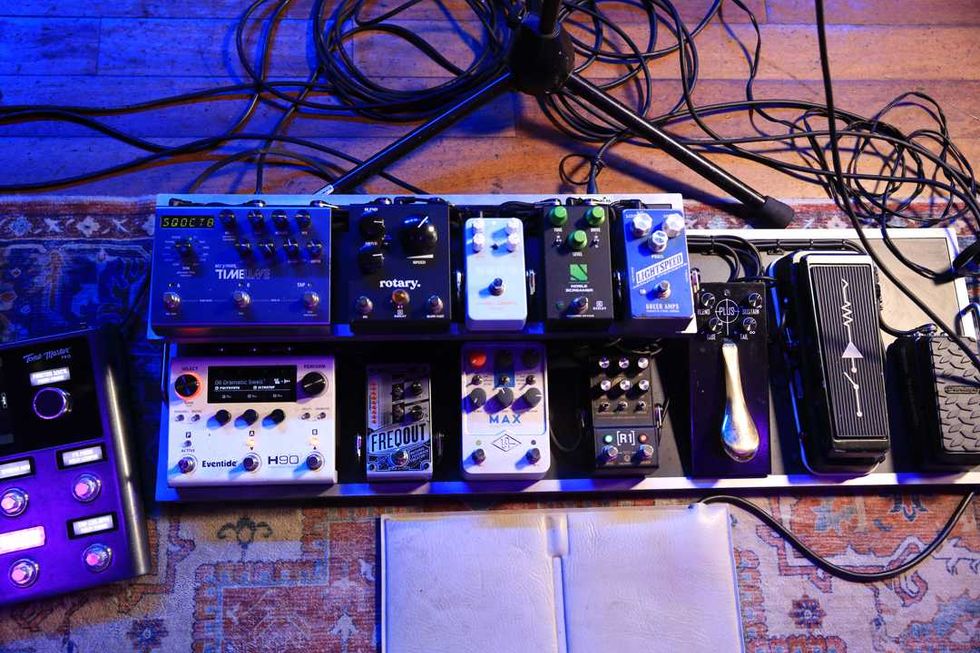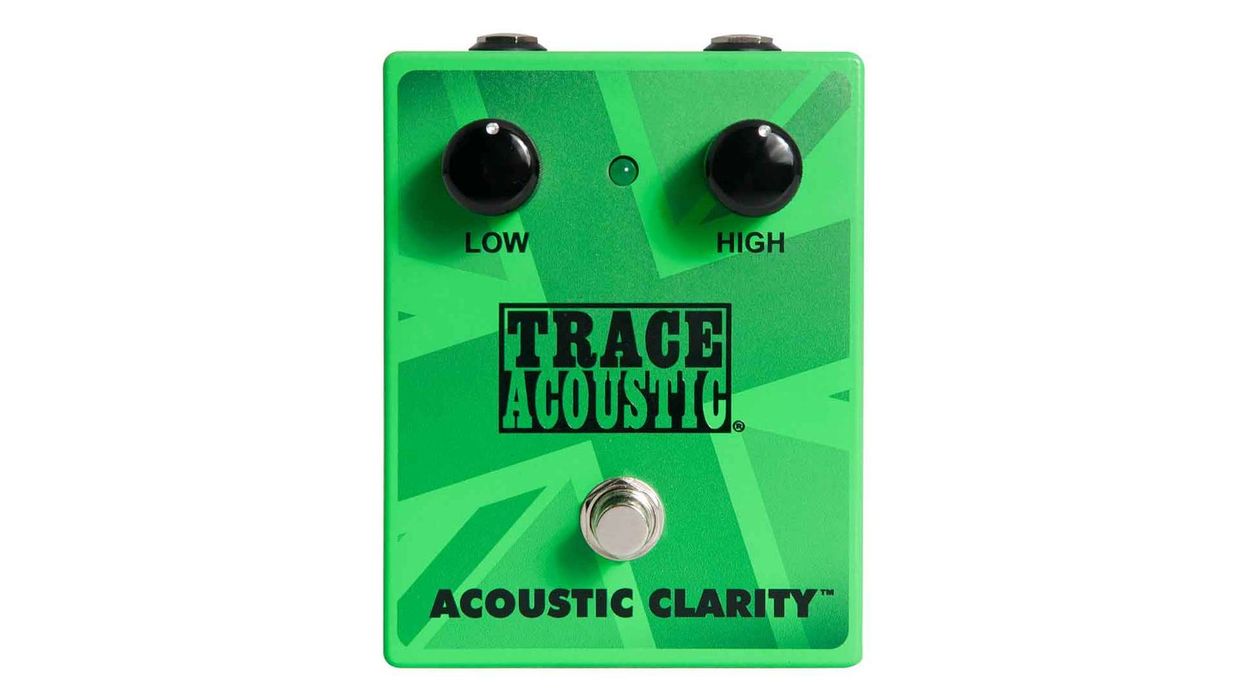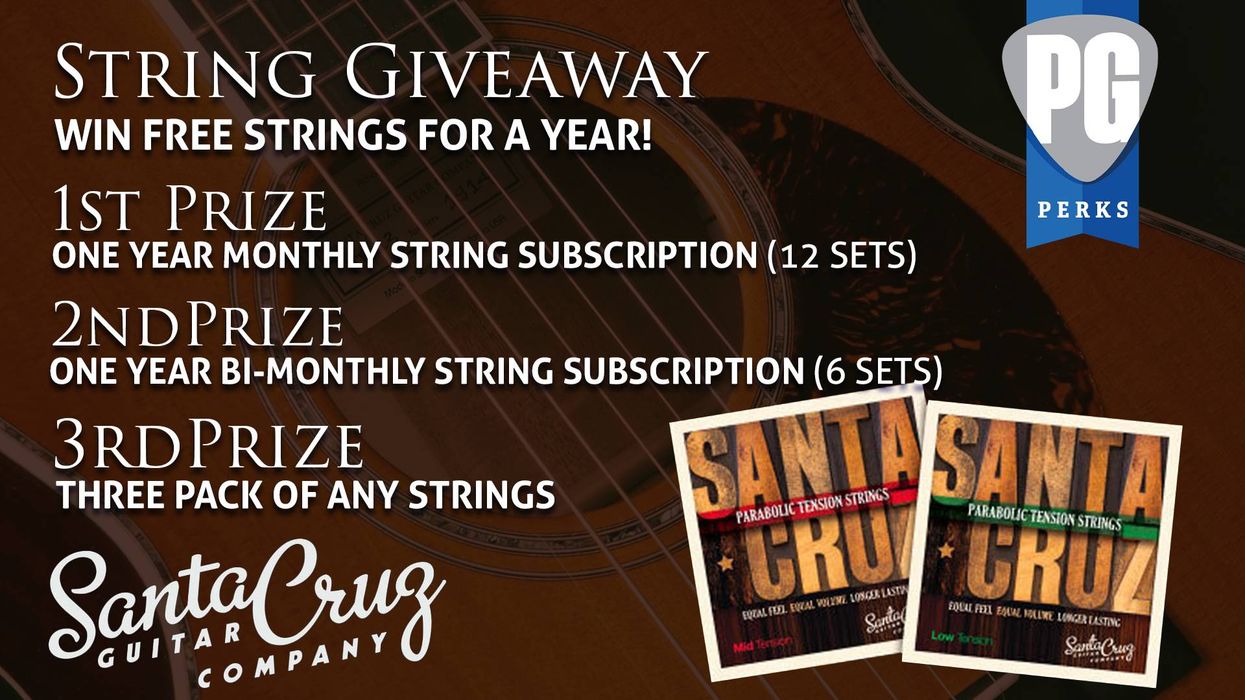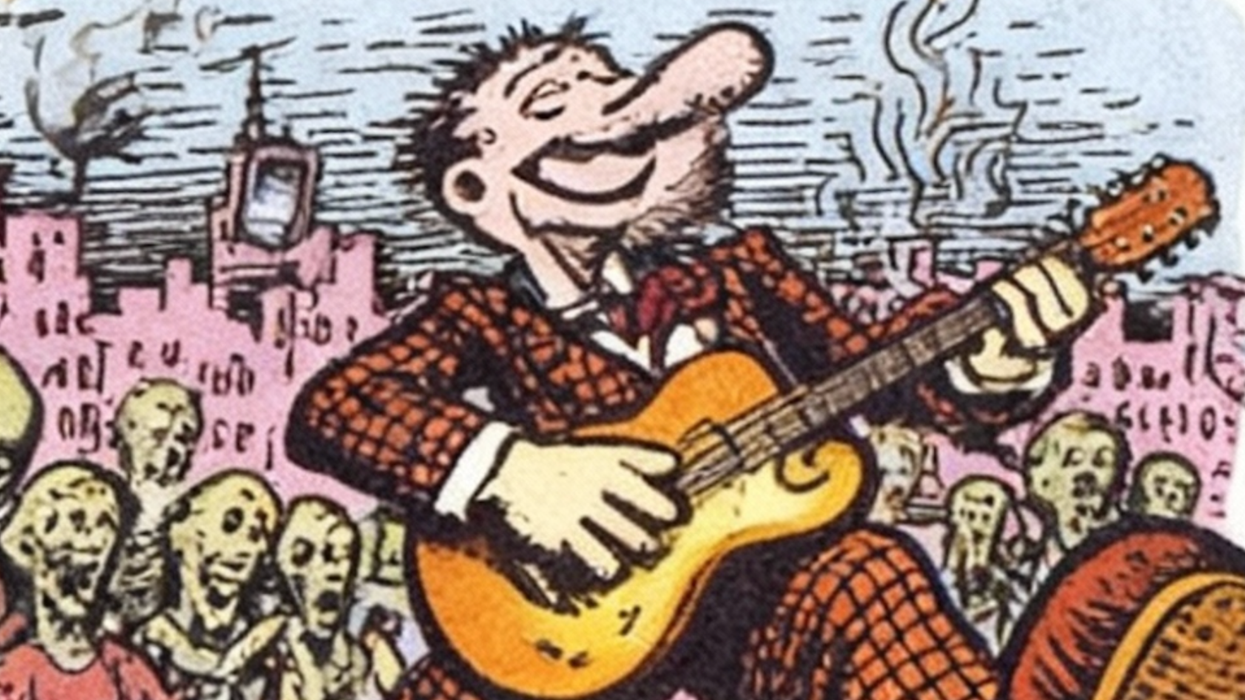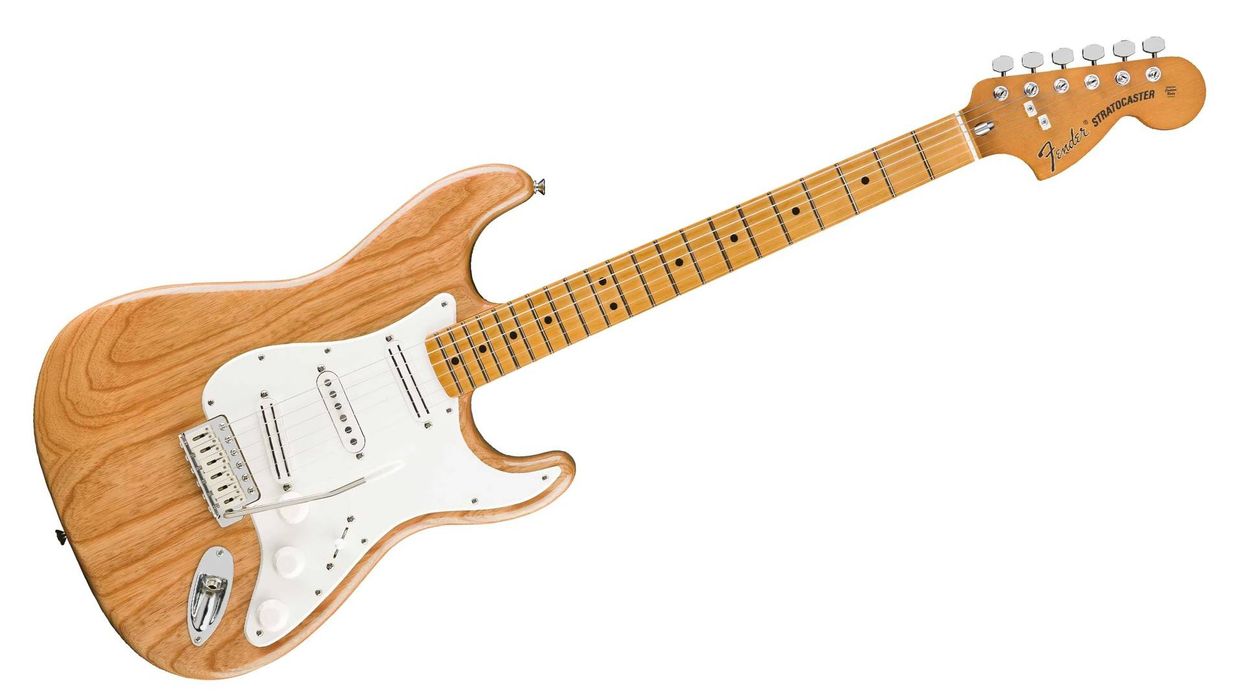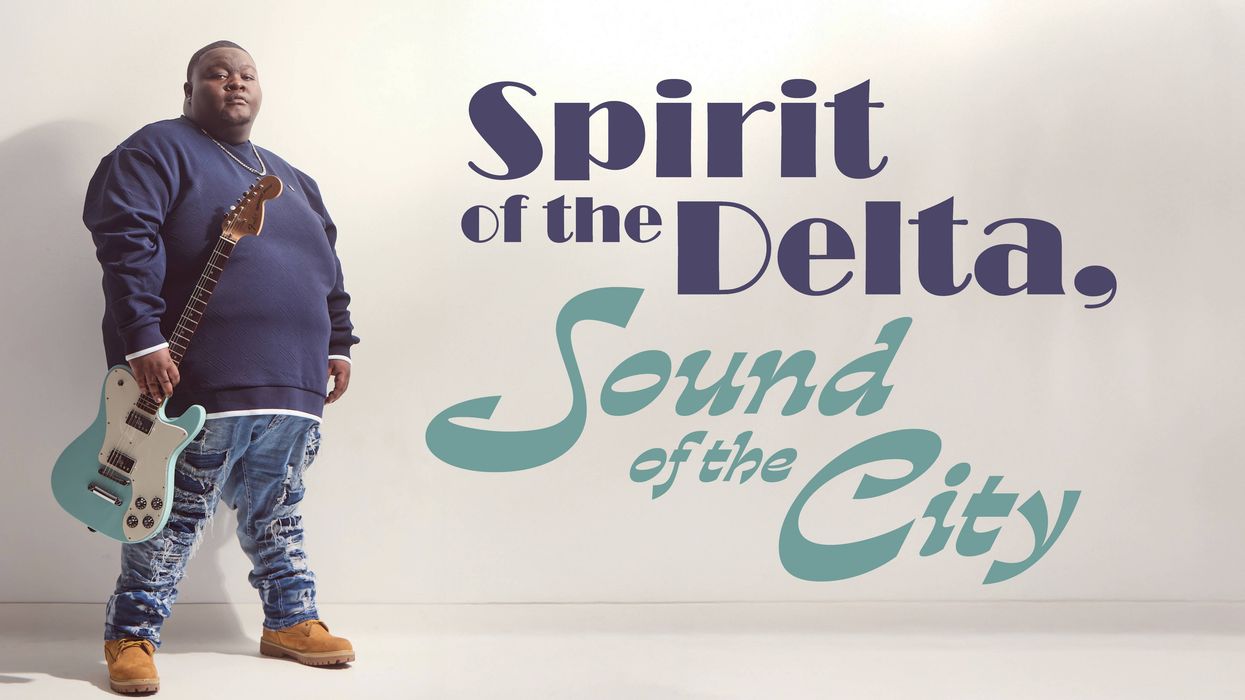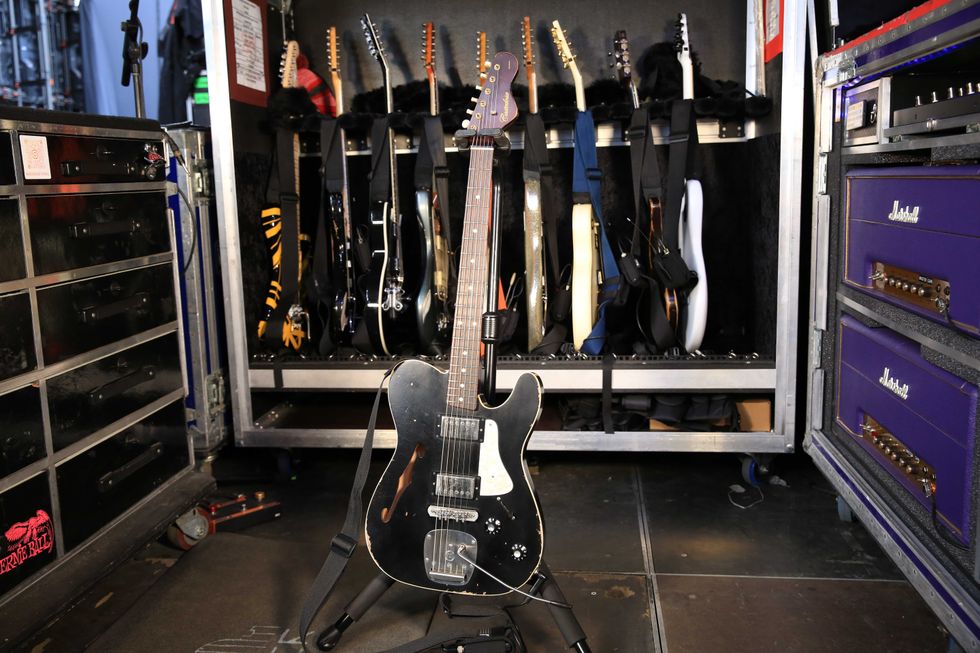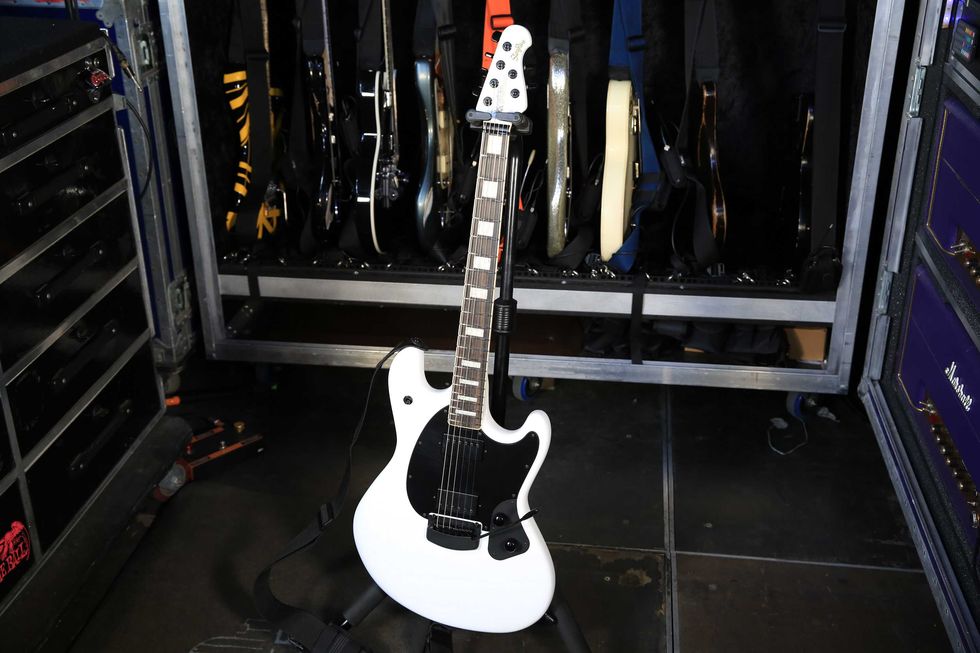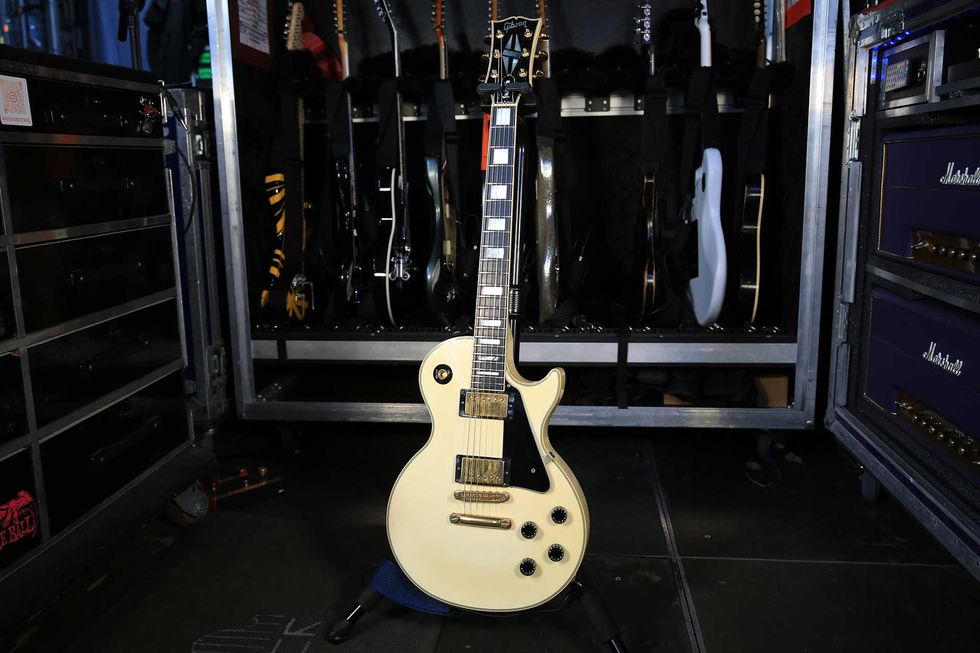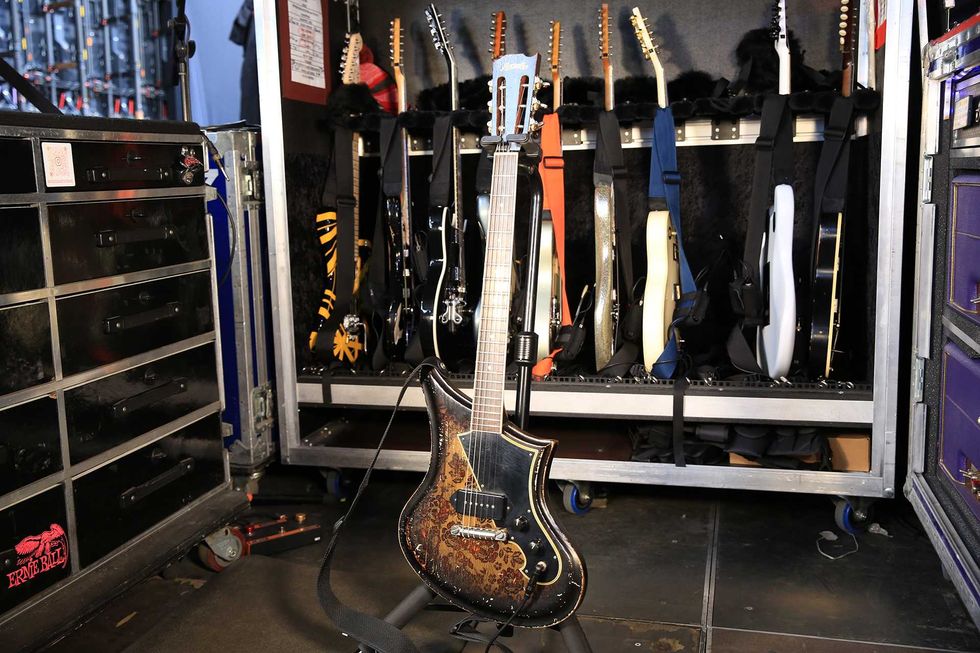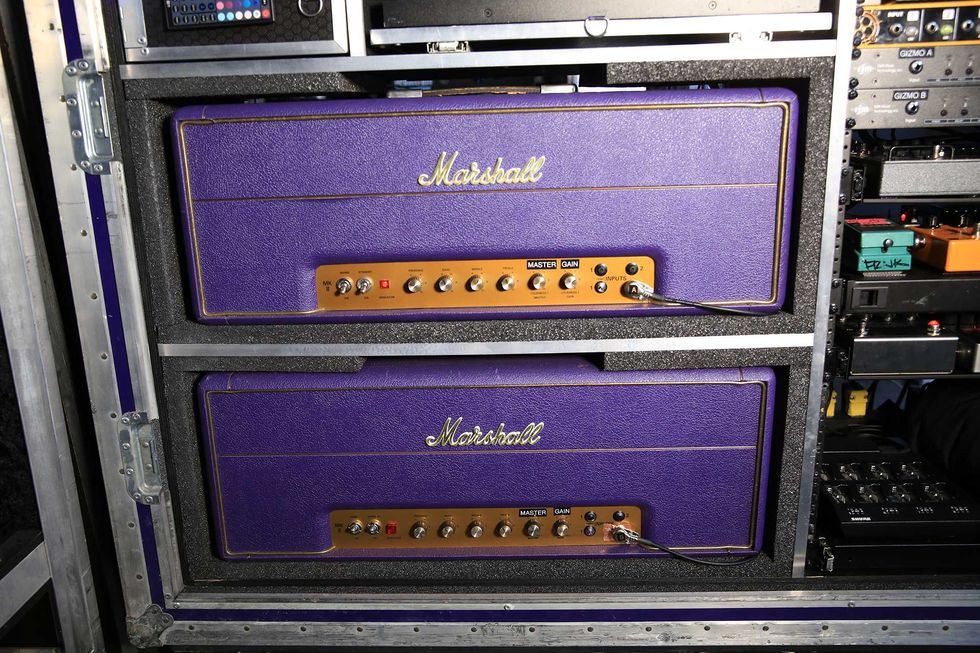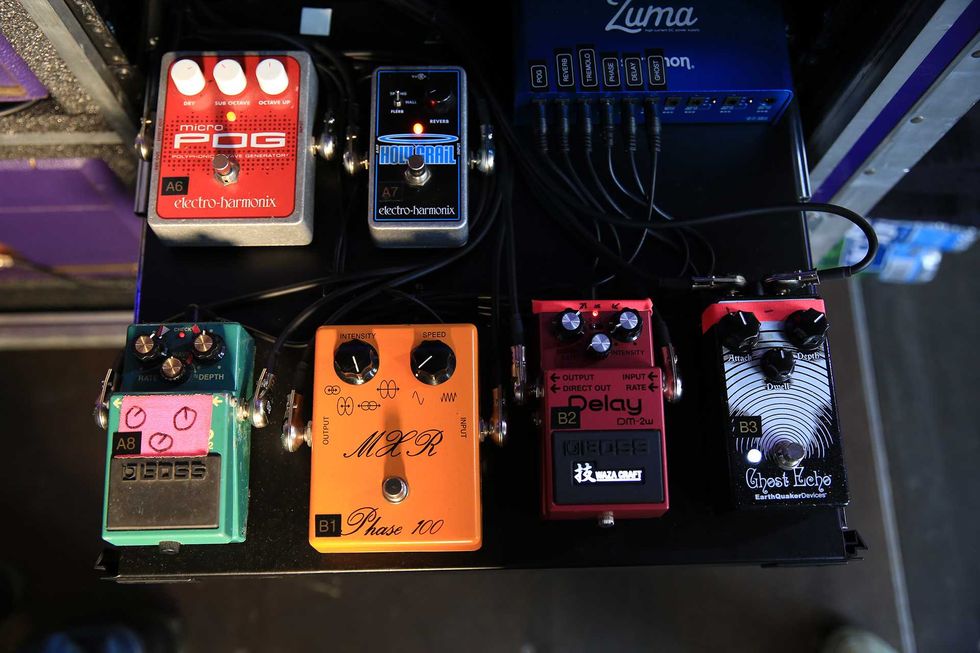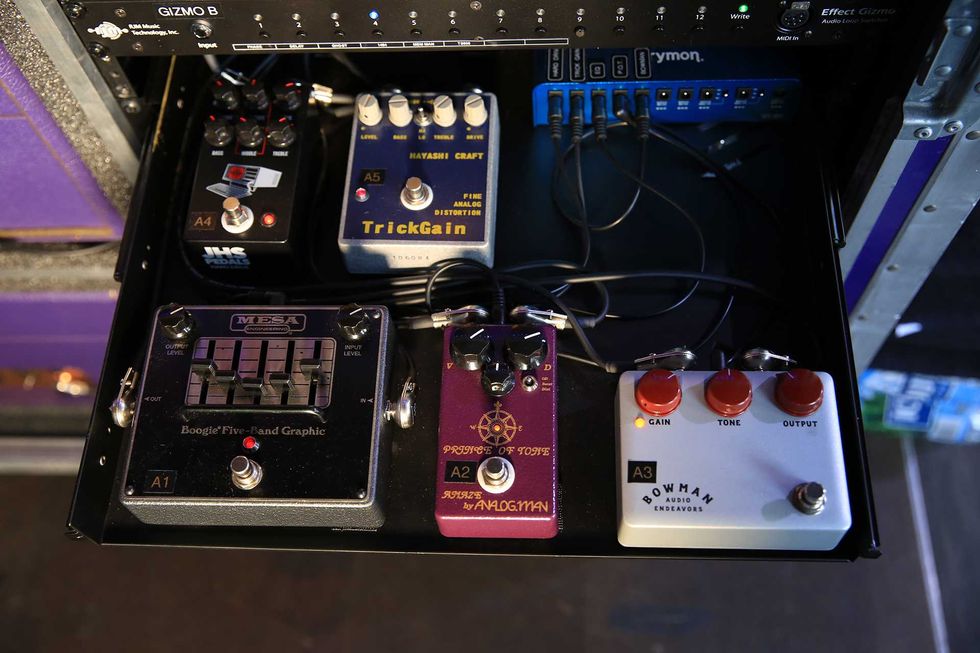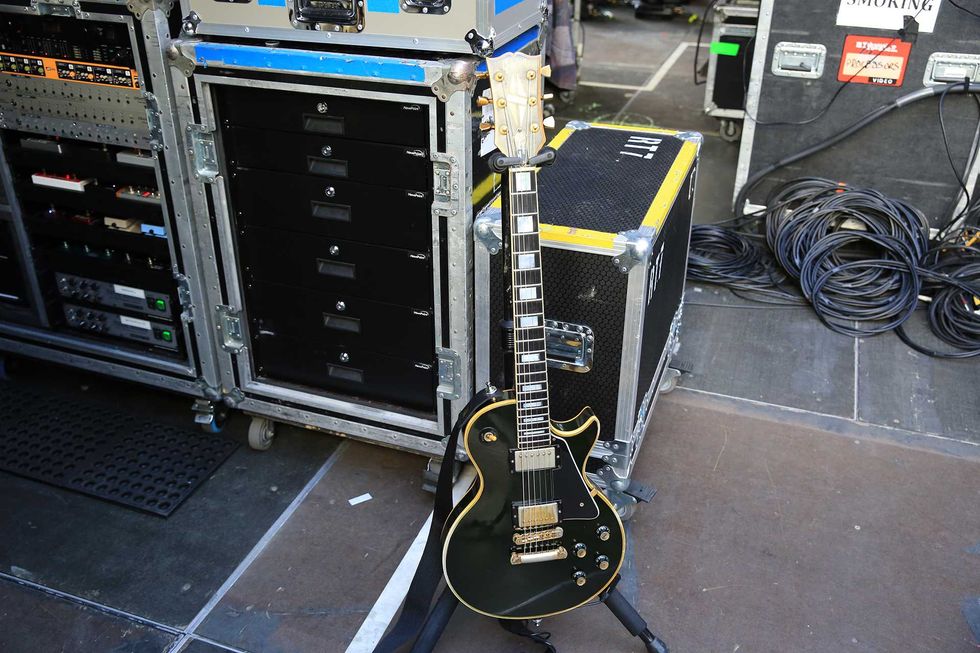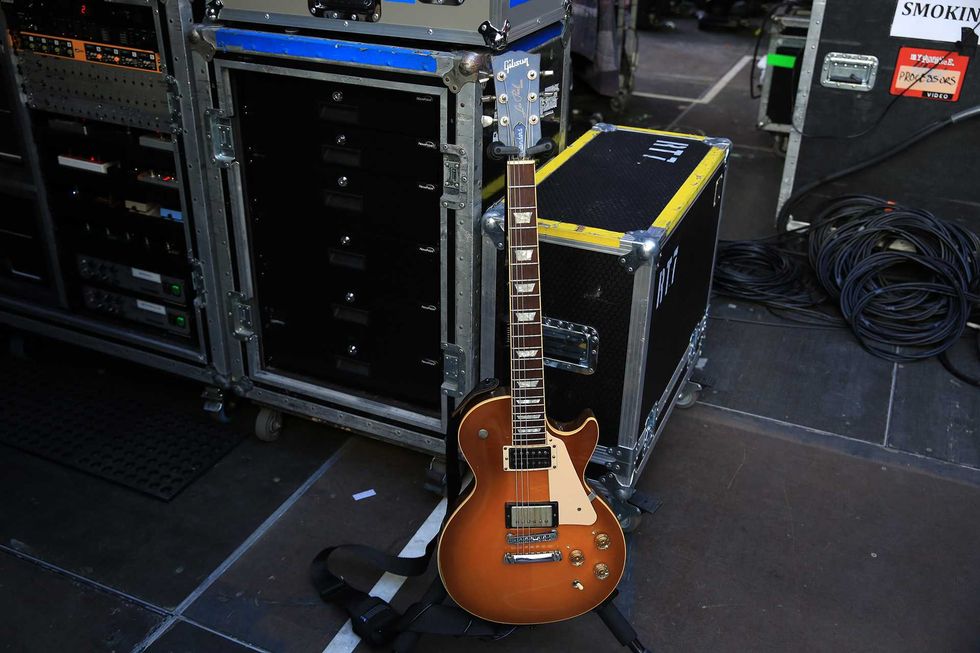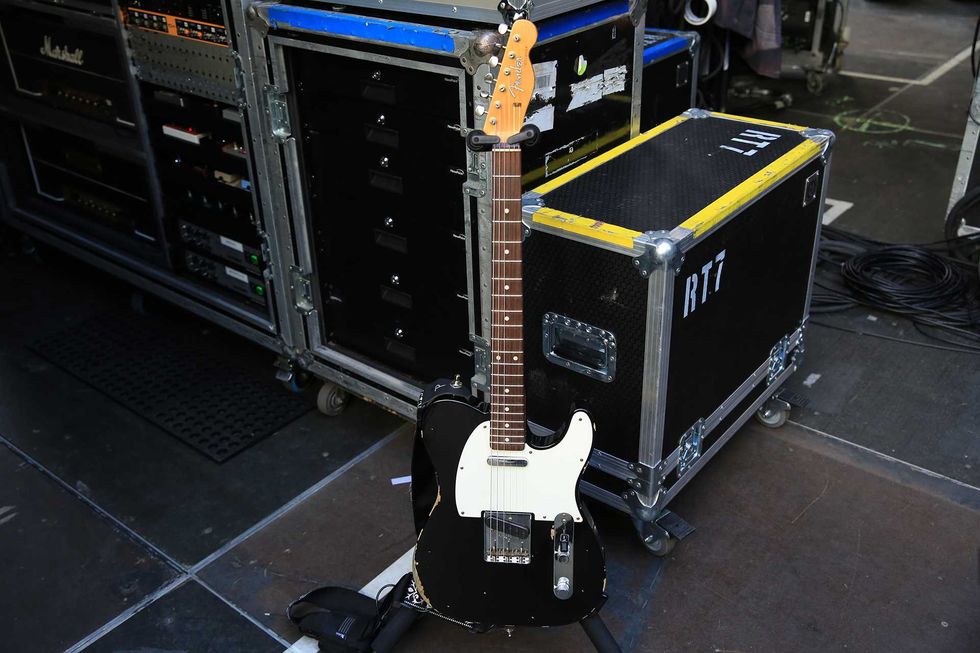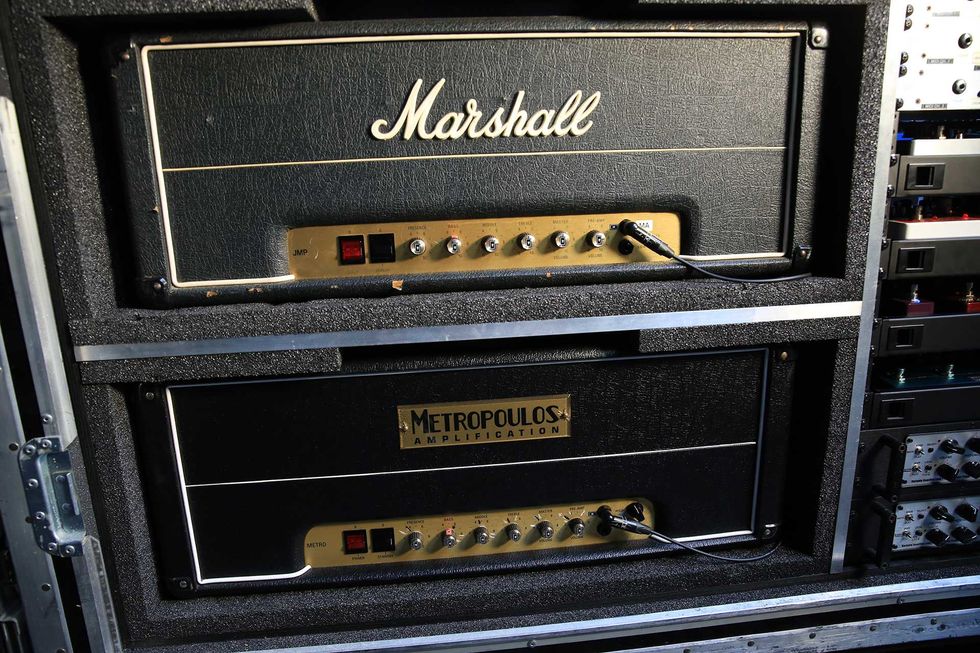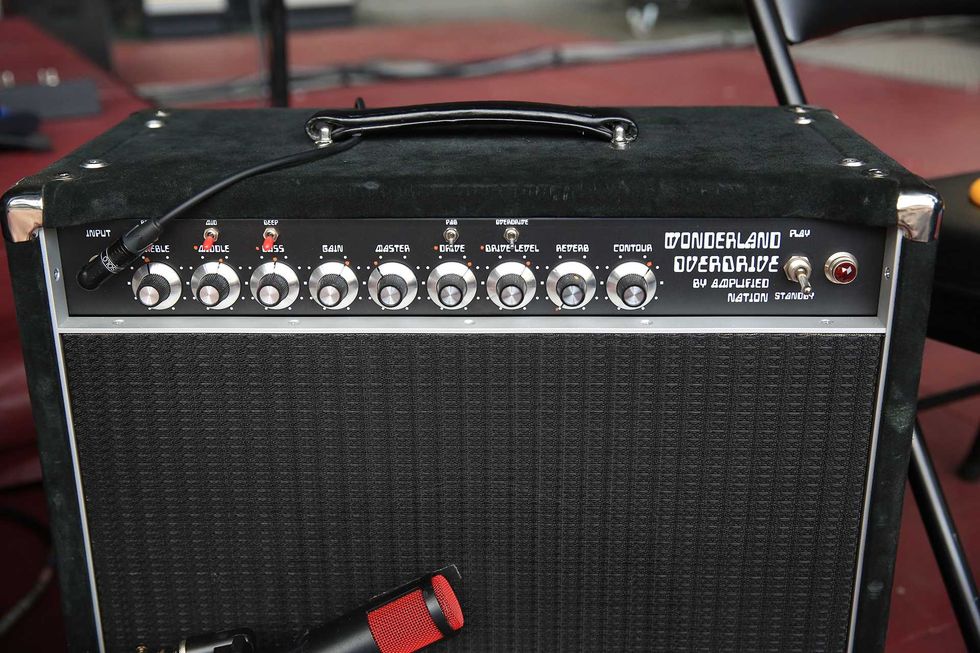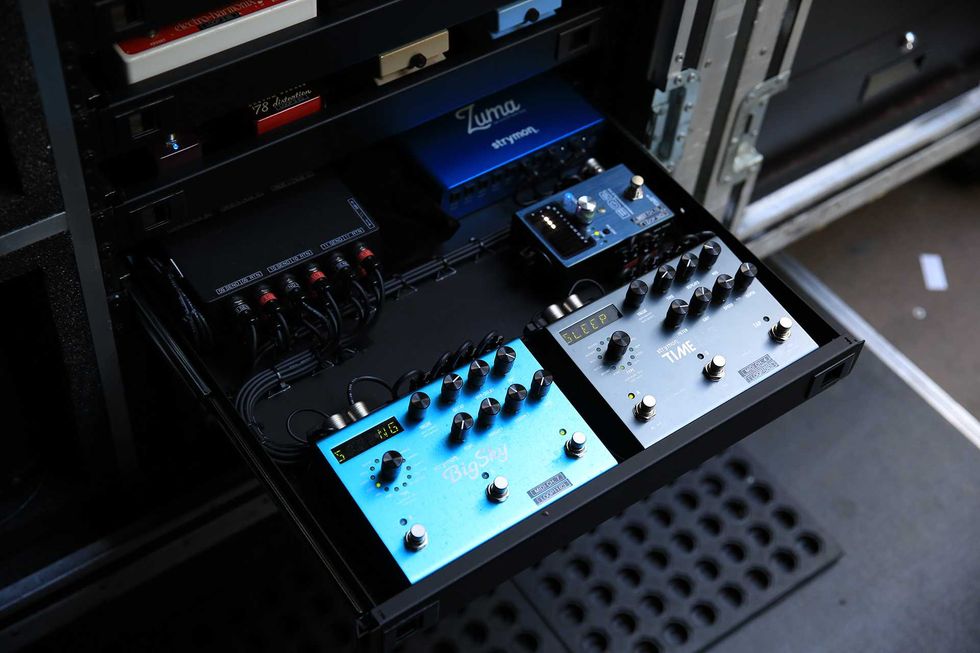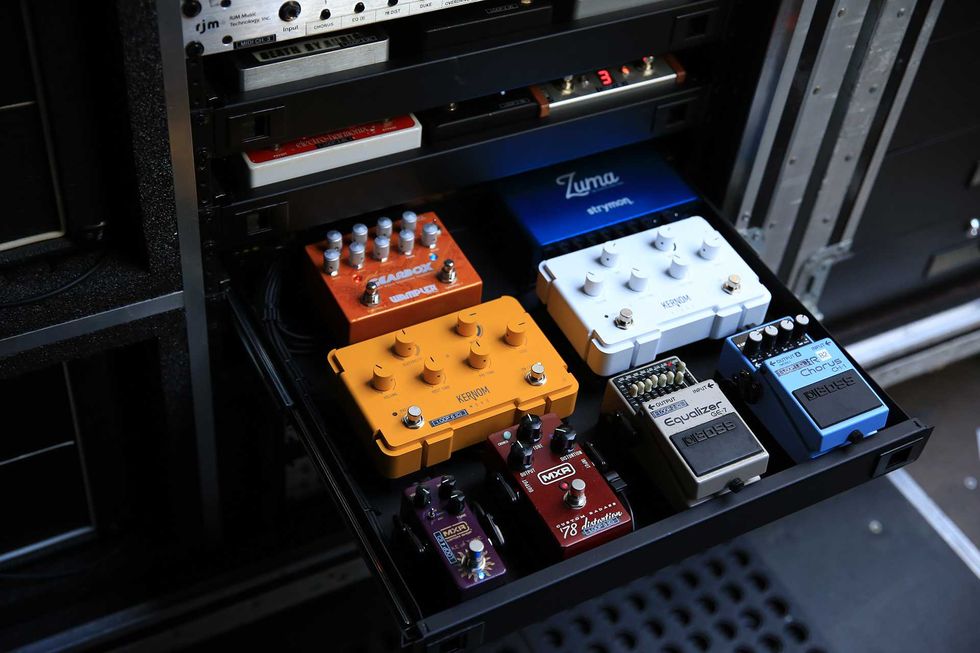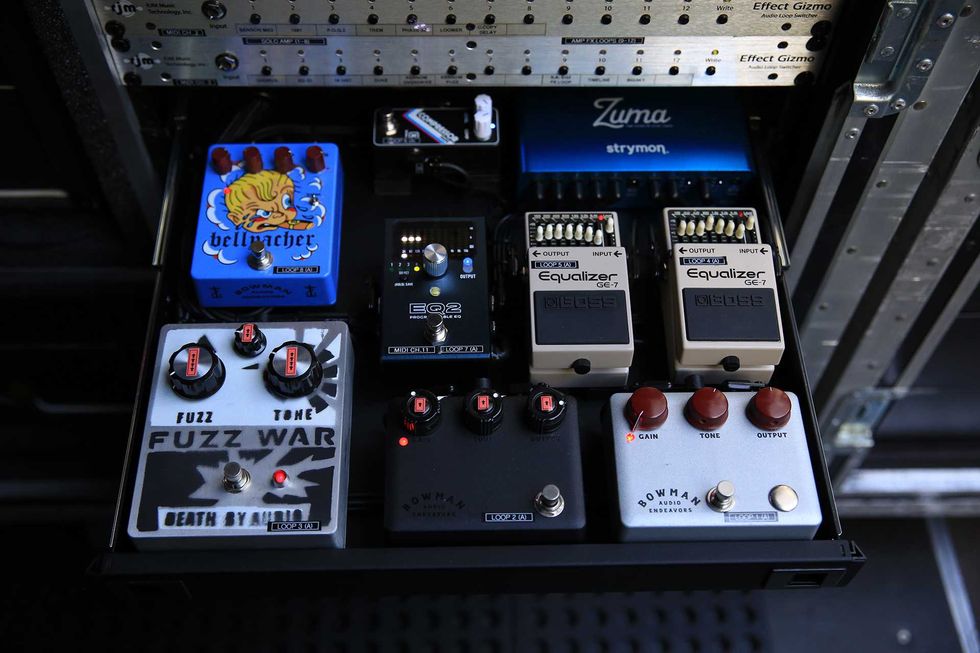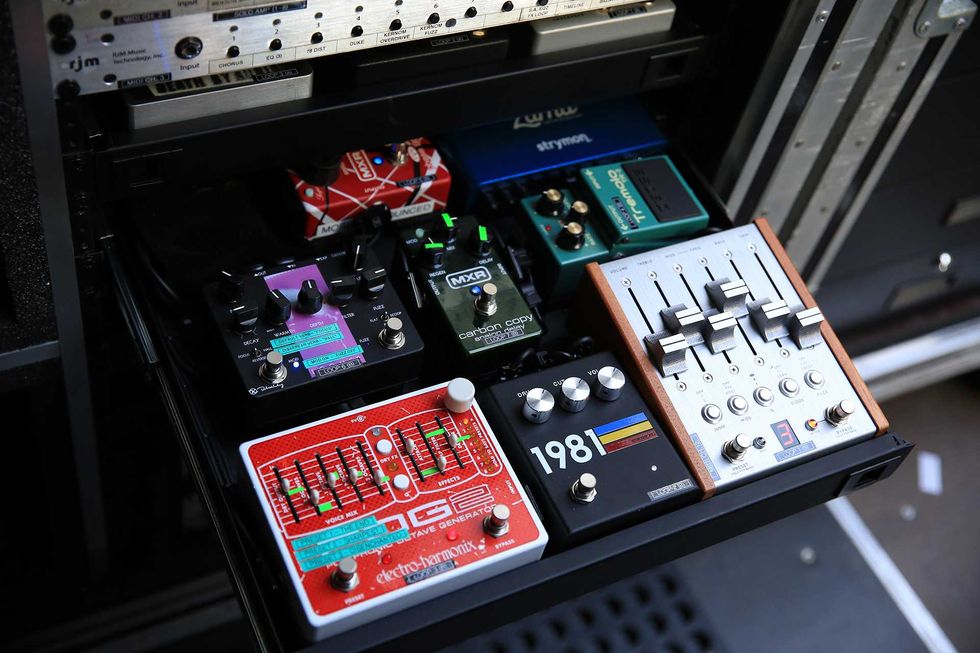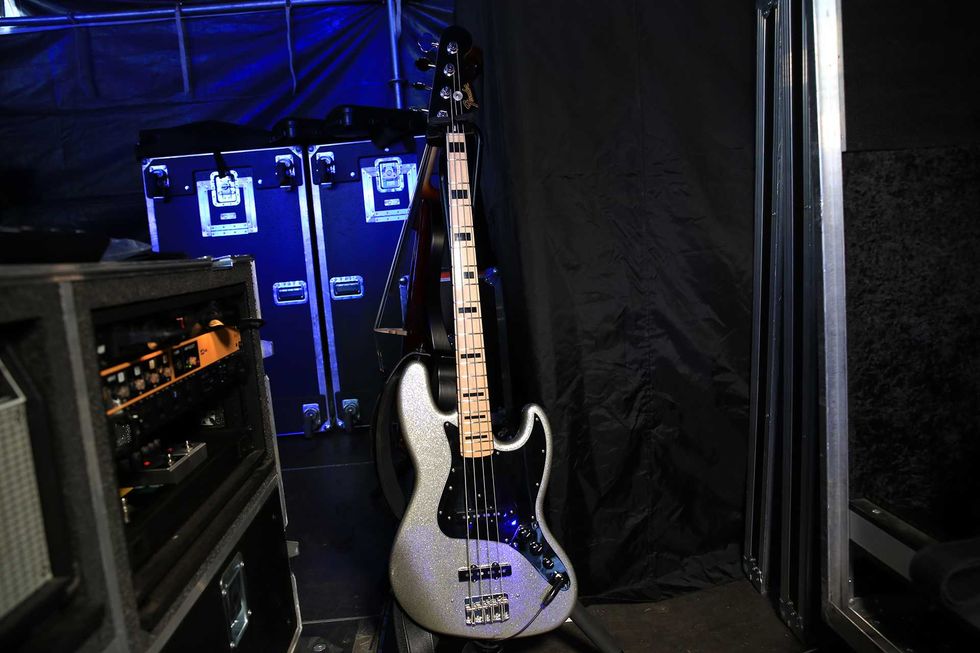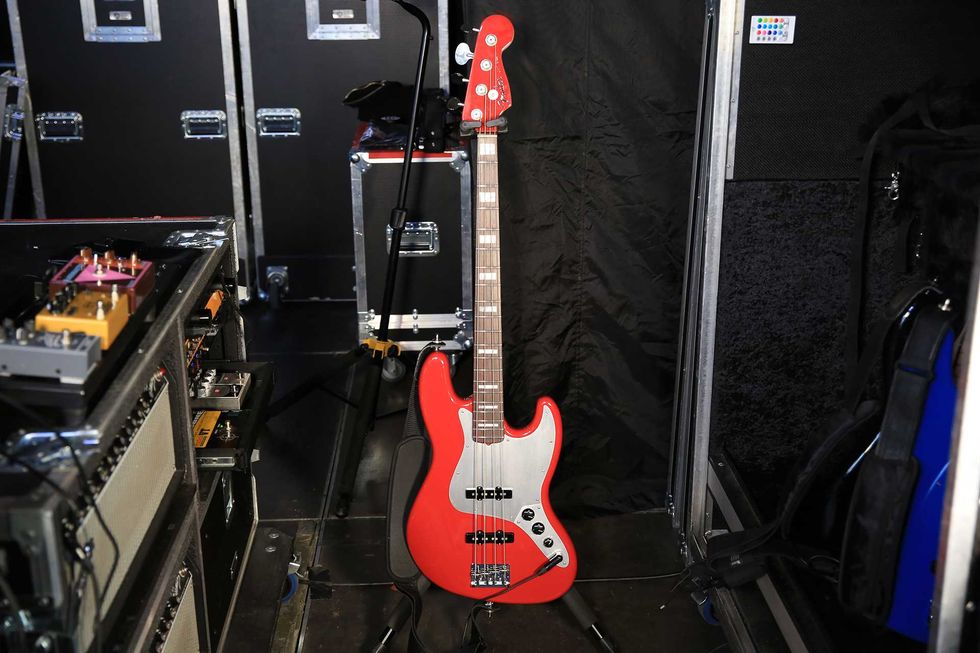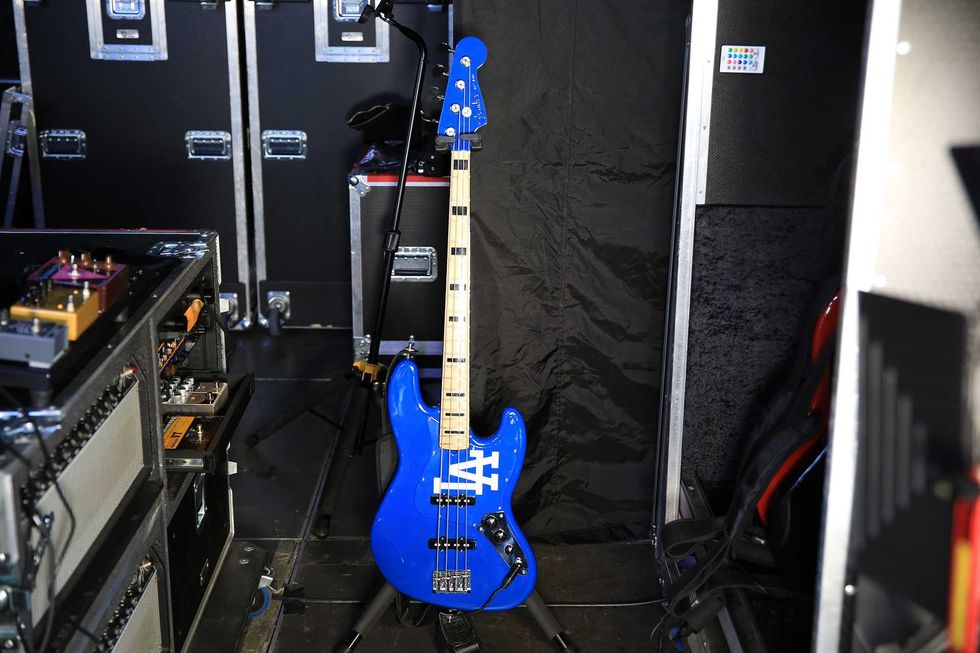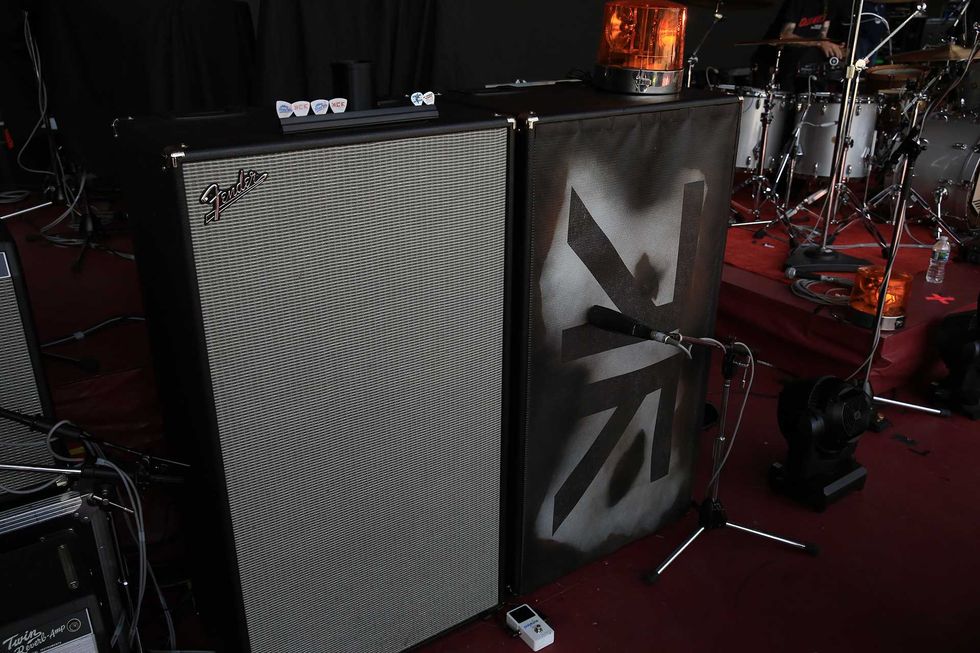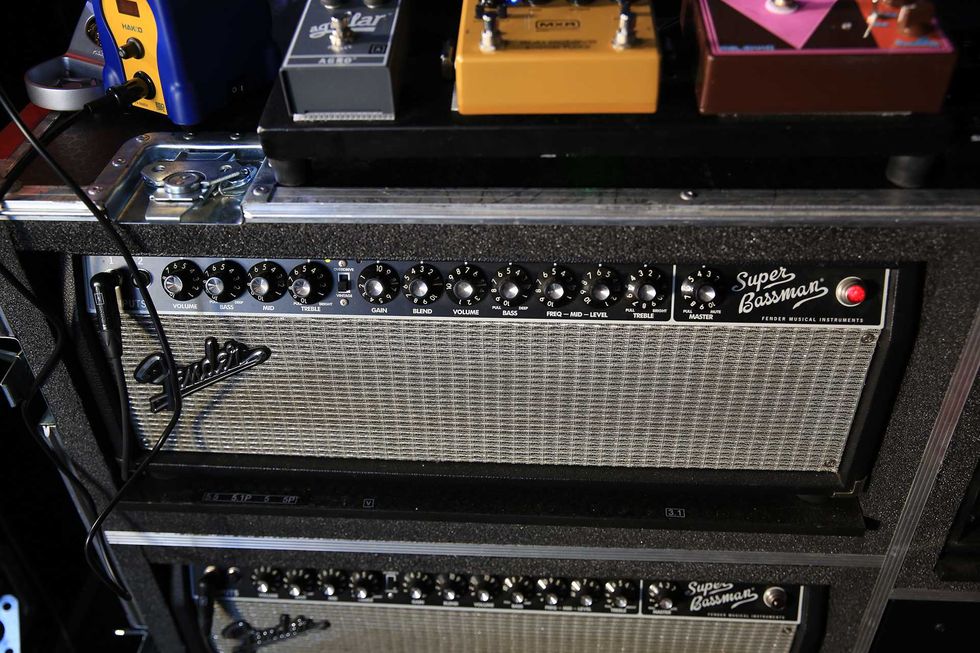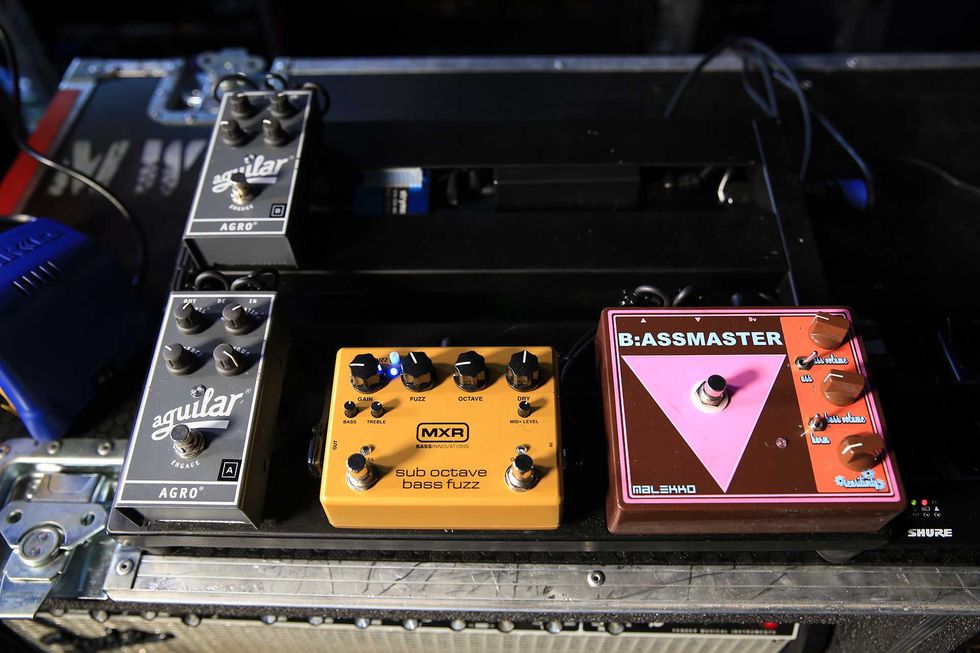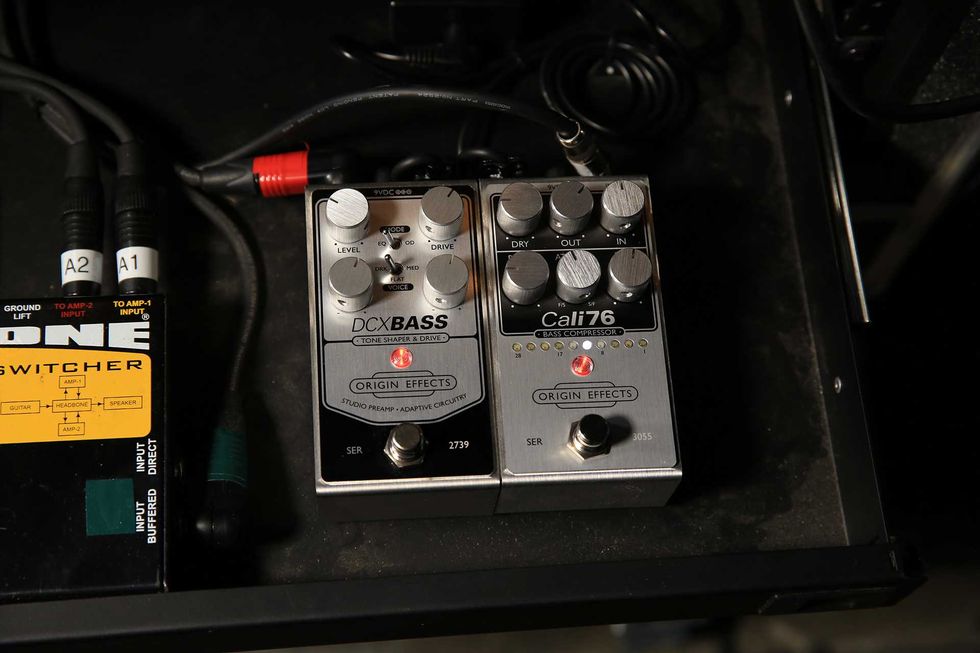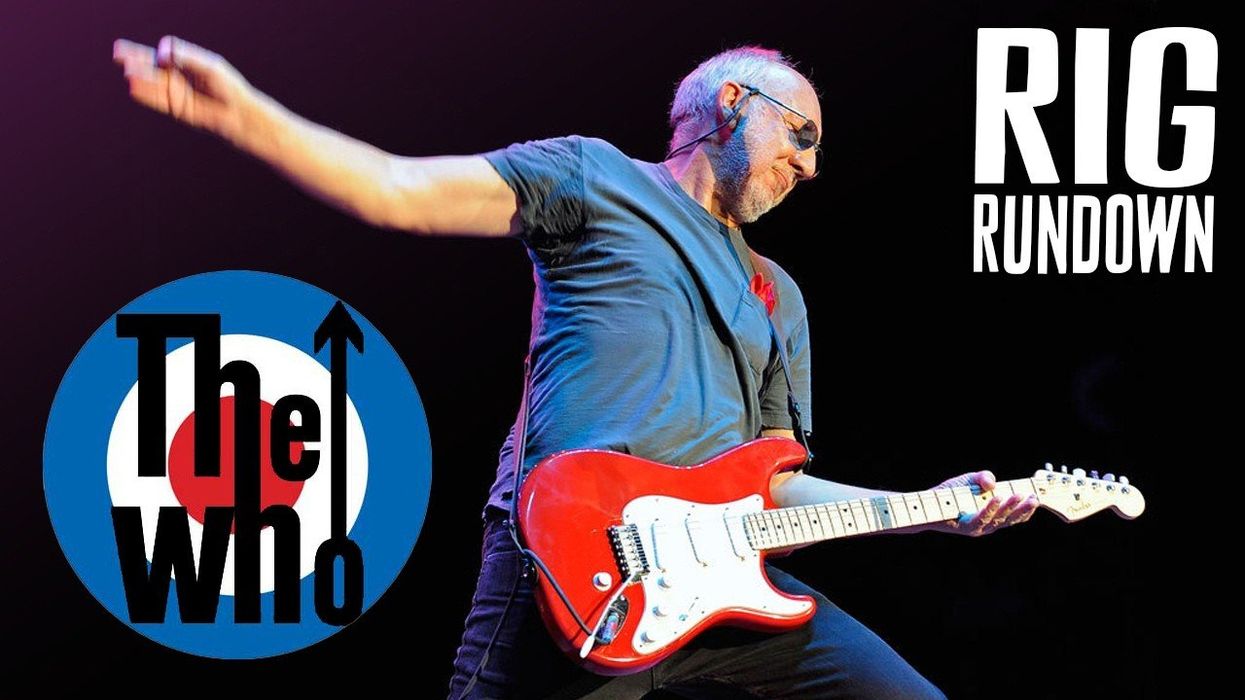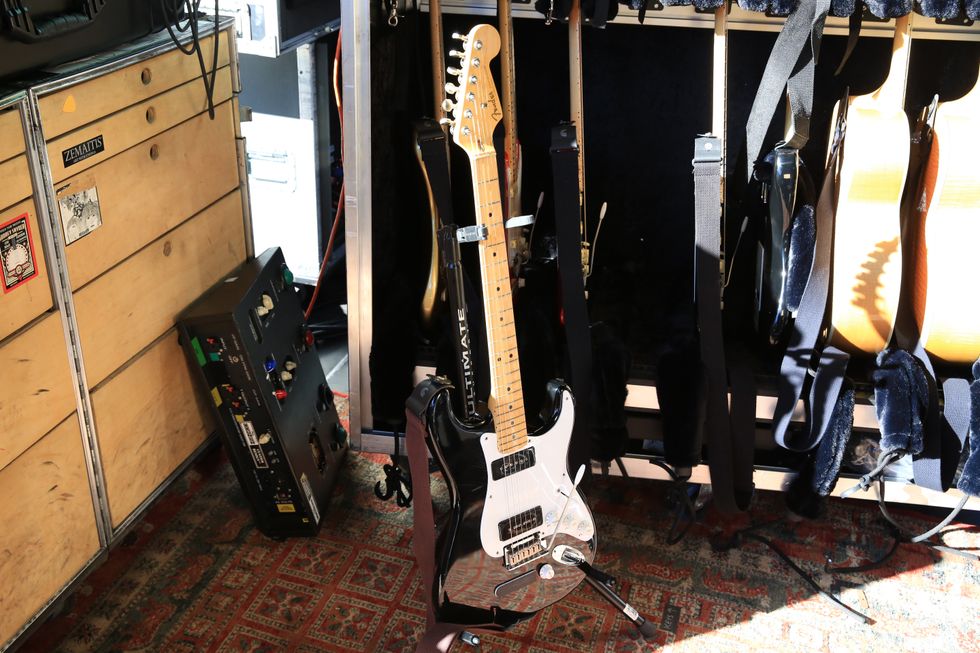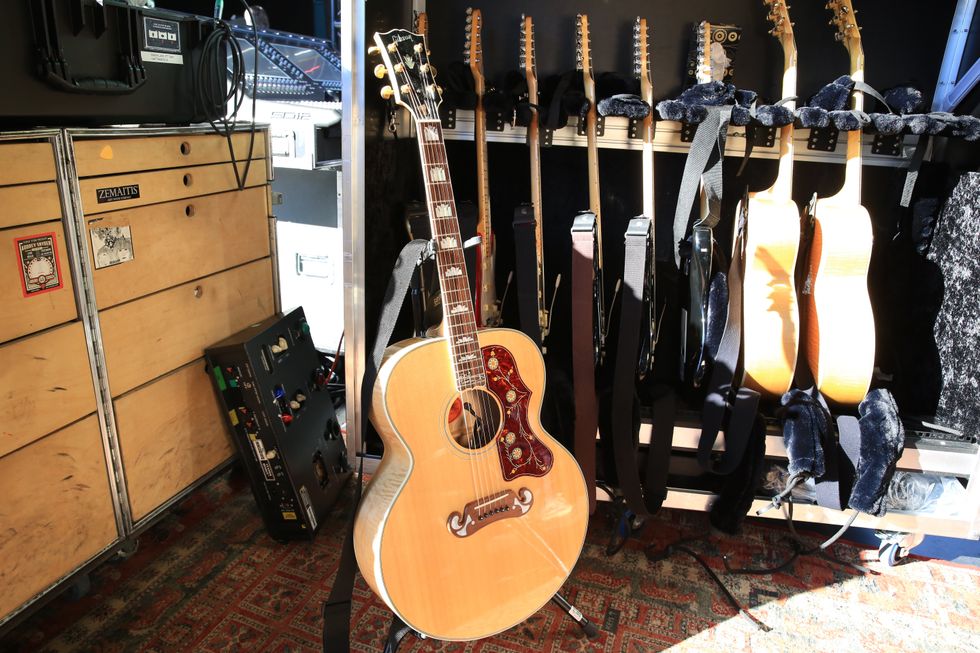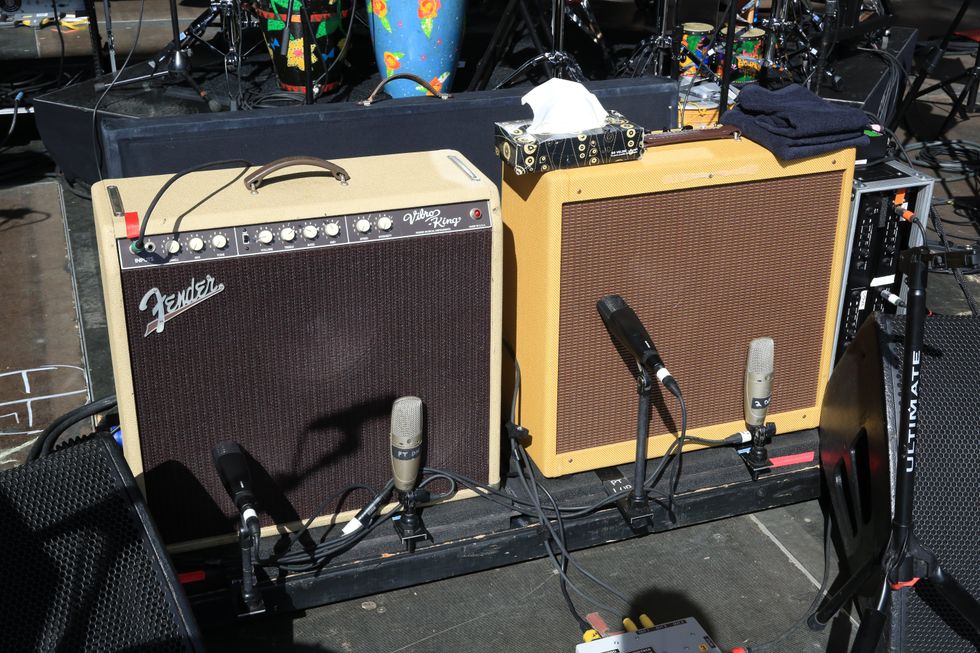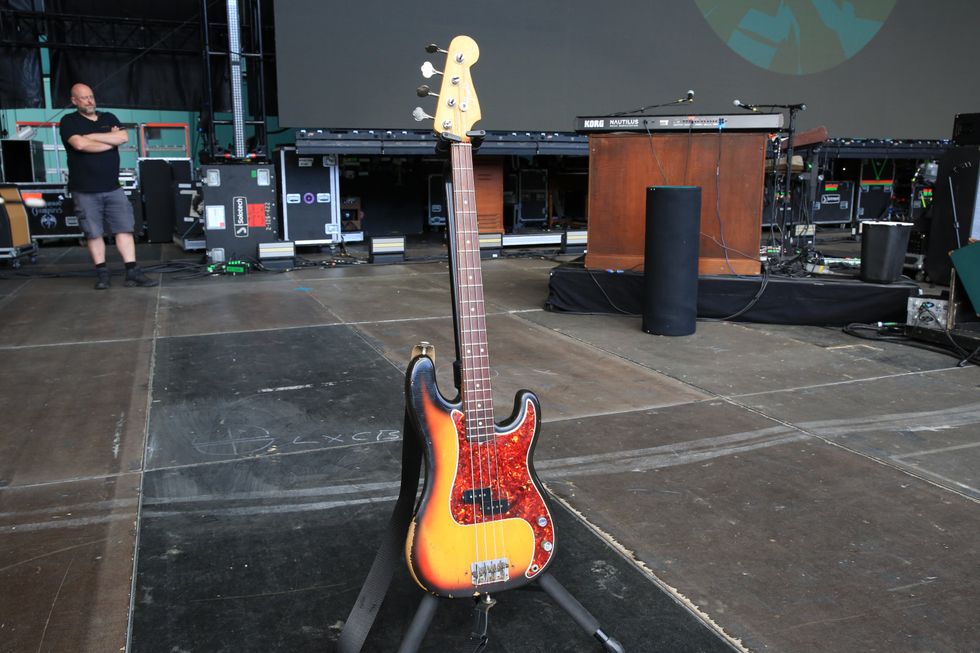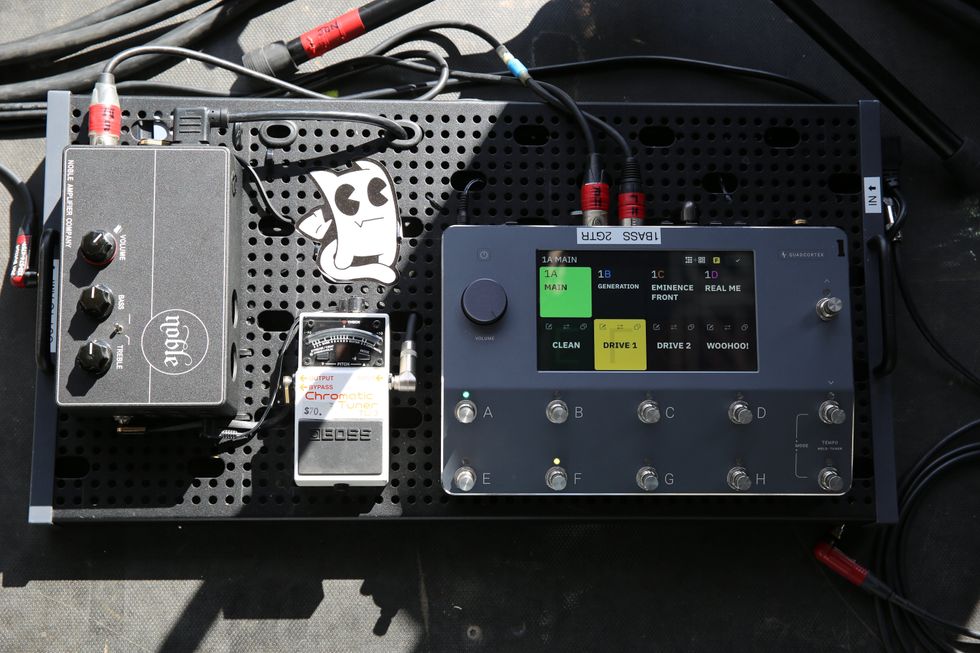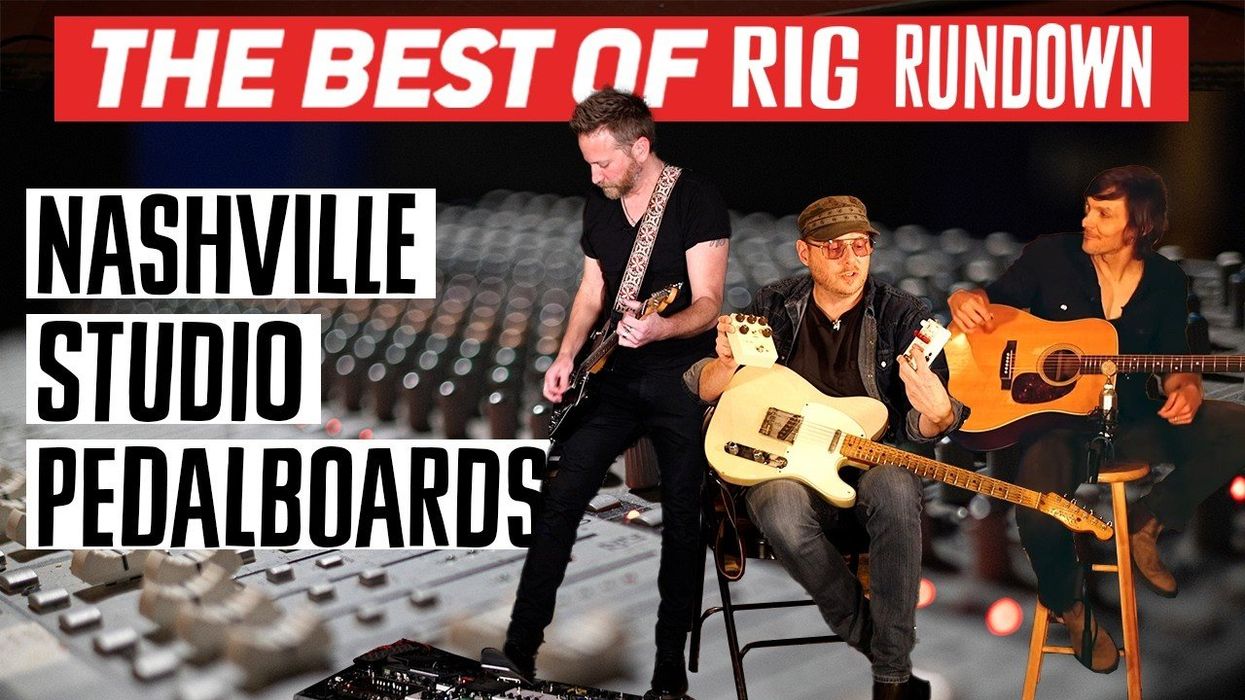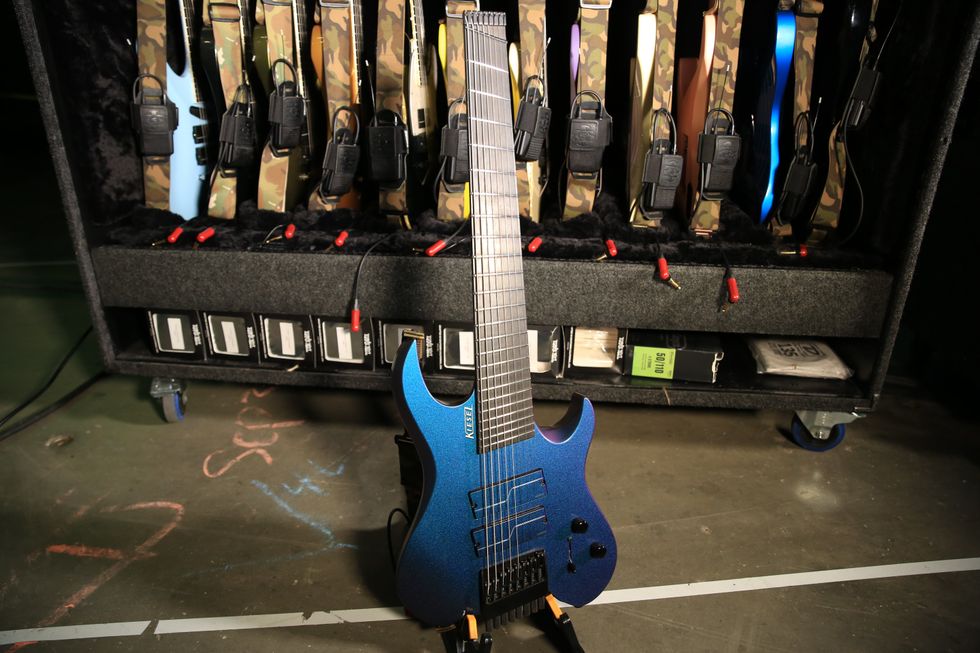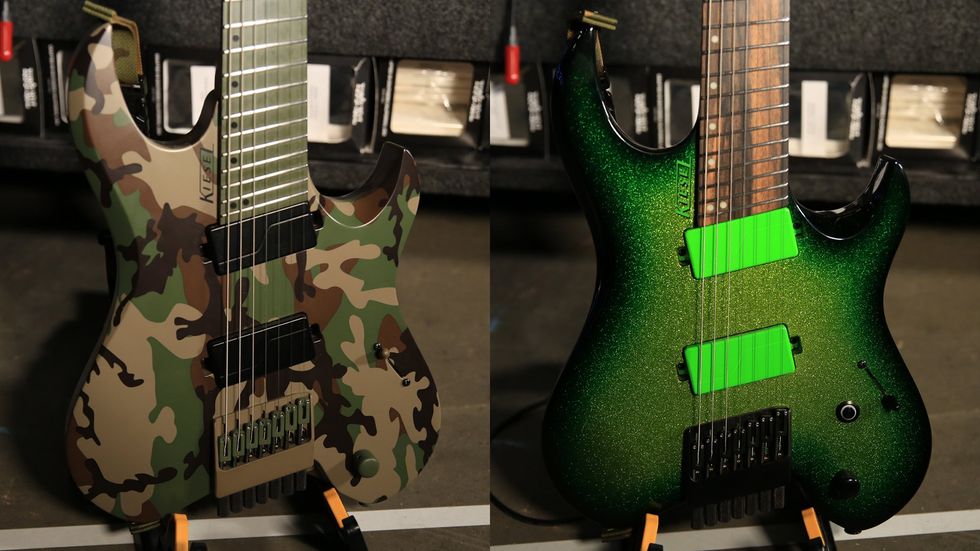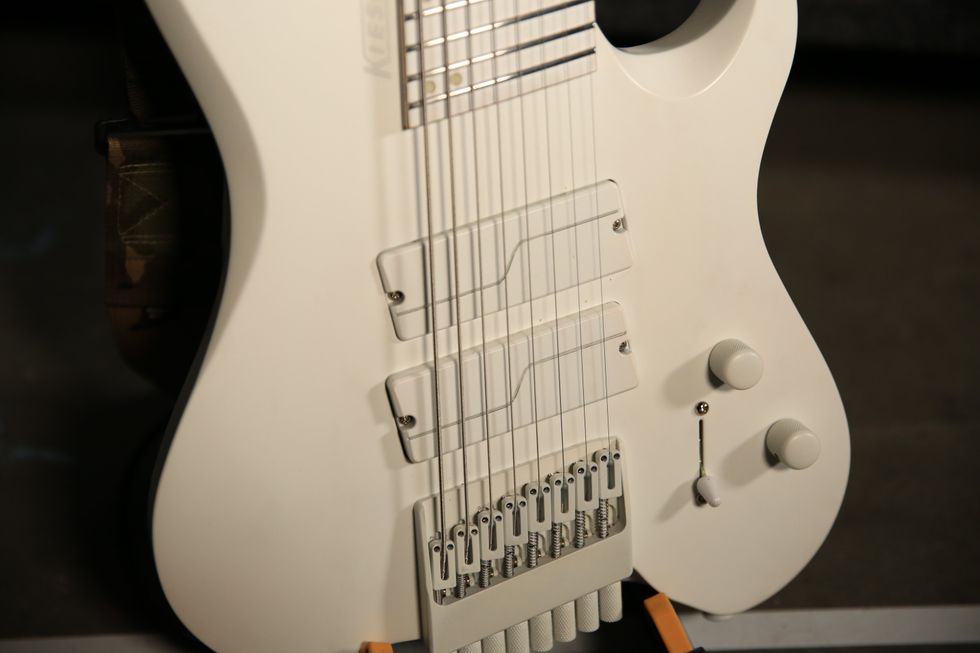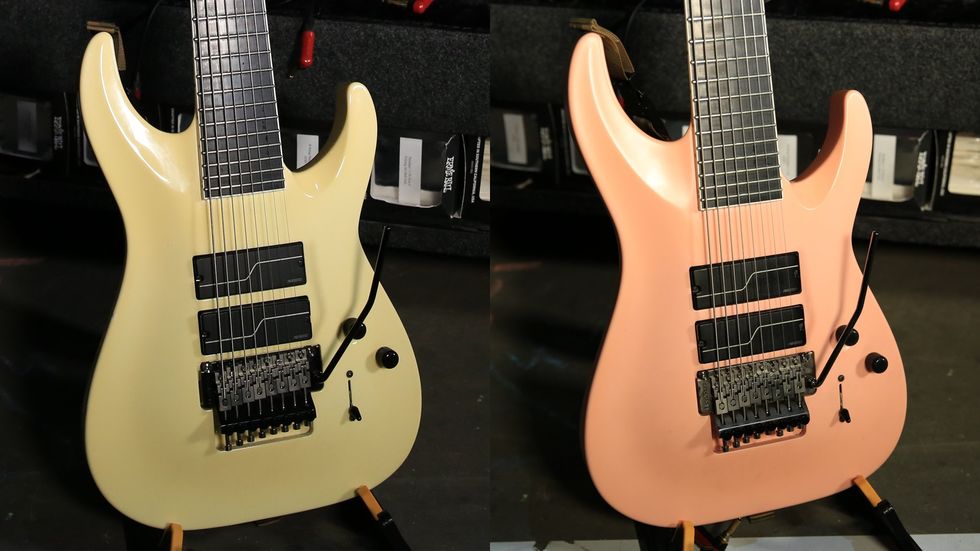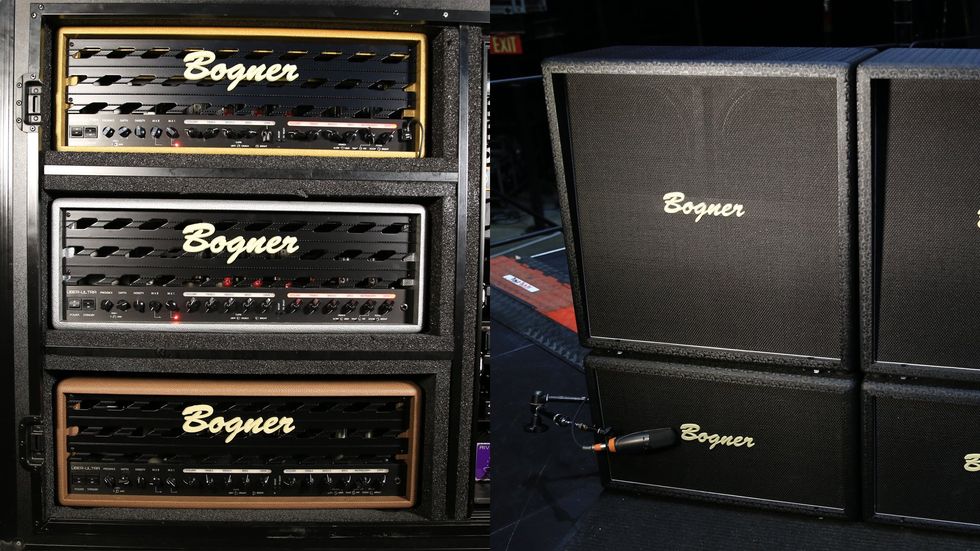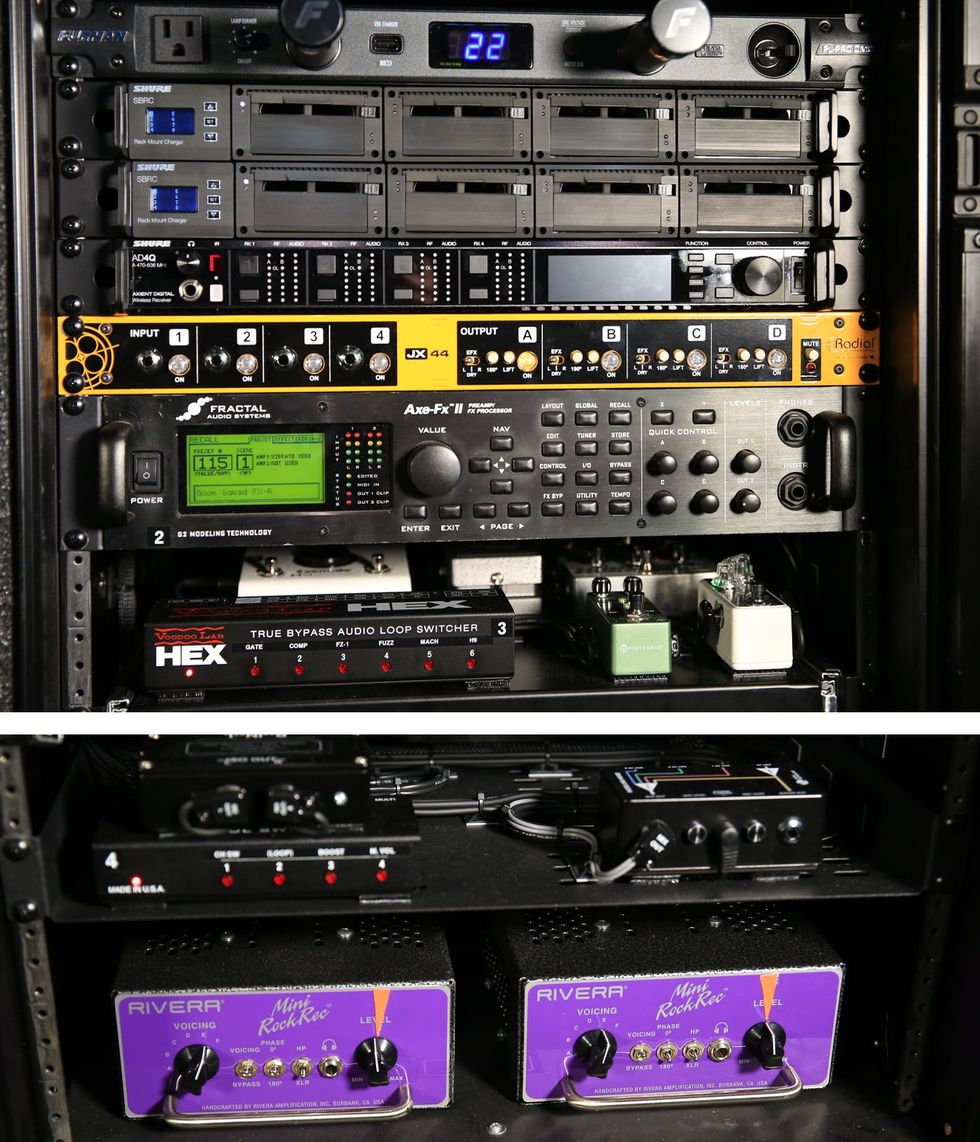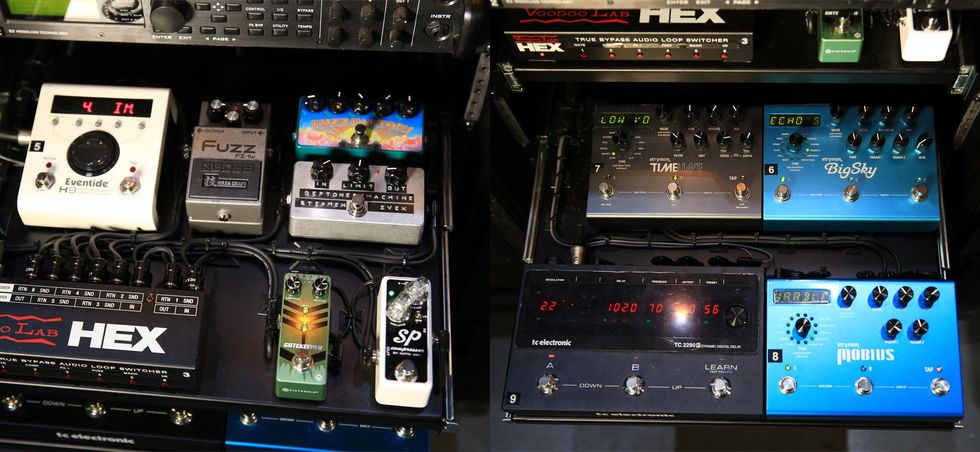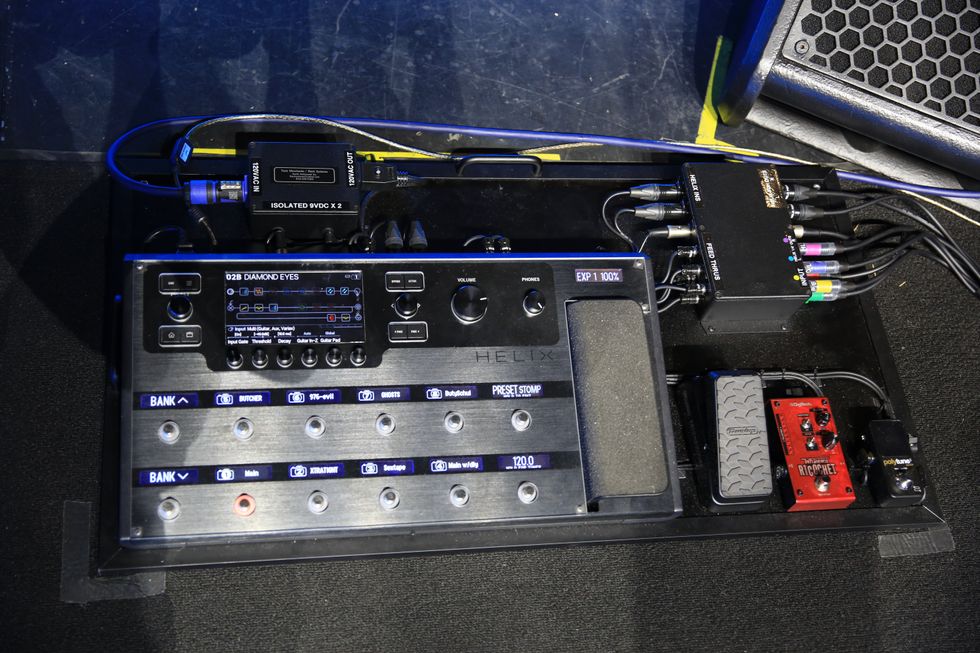Check out the signature models (and more) that Scott Ian, Jon Donais, and Frank Bello are rocking on the thrash masters’ 40th anniversary tour.
Anthrax went to church when they brought their Covid-delayed 40th anniversary tour to Nashville—the Mother Church of Country Music, that is, aka the Ryman Auditorium—on August 15. And PG’s Perry Bean was there to welcome the thrash metal royals and talk with guitarists Scott Ian and Jon Donais, and bassist Frank Bello. Some things have changed in their gear since our earlier Rundown, in 2012, but not Ian’s loyalty to Jackson, which makes the signature-model King V’s he loves to play. Donais is equally stoked on his Dean Exile signature axe, which he also used on the recent Shadows Fall reunion tour. And Bello shared his new signature Charvel bass and EMG pickups. Ian kicked things off, playing his V with a vintage-diner-tile-style finish, his current favorite. Check it out!
Brought to you by D’Addario XS Coated Strings.
Killer King

The first axe Ian picks up for most Anthrax shows is this two-year-old signature model from the Jackson Custom Shop, sporting the company’s old-school logo, an FU-Tone Floyd Rose, Seymour Duncan JBs, and—key—Eddie-approved Iron Maiden wristbands holding his wireless packs.
The Green Machine
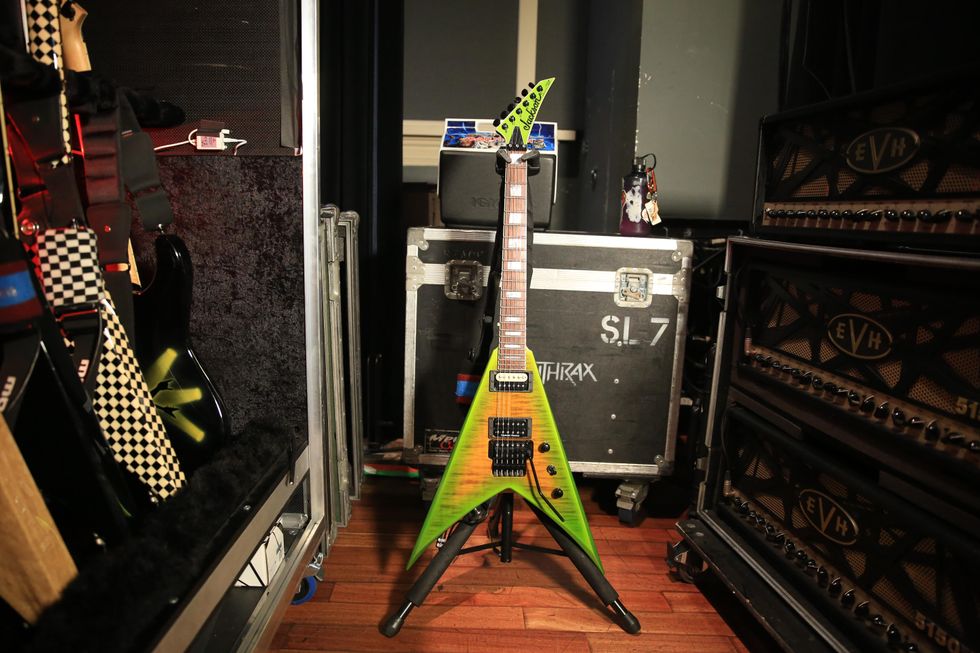
Avocado burst? Another of Ian’s favorites was about to get a little fine-tuning from Adam Reiver, who was going to meet the band in Philly to replace this guitar’s bridge with a more colored coordinated one from his FU-Tone catalog. Although, like his white No. 1, this 6-string has a 24.75" scale neck, a mahogany body, a 1-piece through-body maple neck, Seymours, a 12"-16" compound radius bound laurel fretboard, and 22 jumbo frets, he thinks “this one has a little more bottom end.”
Dio and Dimebag
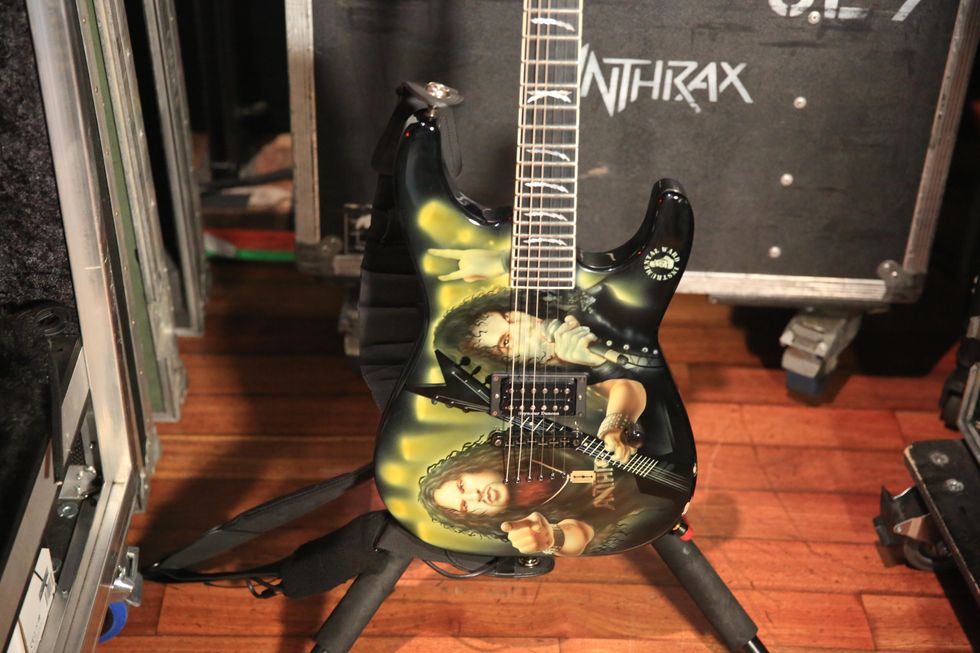
Here’s a metal version of Mt. Rushmore. Ian plays this custom-painted Jackson Soloist—his previous signature model—during “In the End,” Anthrax’s tribute to Ronnie James Dio and Dimebag Darrell, from 2011’s Worship Music album. These days, for lower tunings, Ian uses D’Addario .010–.052 sets. (At one point, he was using .012–.060 sets, but was brutalizing his hands.) For standard, he employs .009–.042s.
EVH and EL34
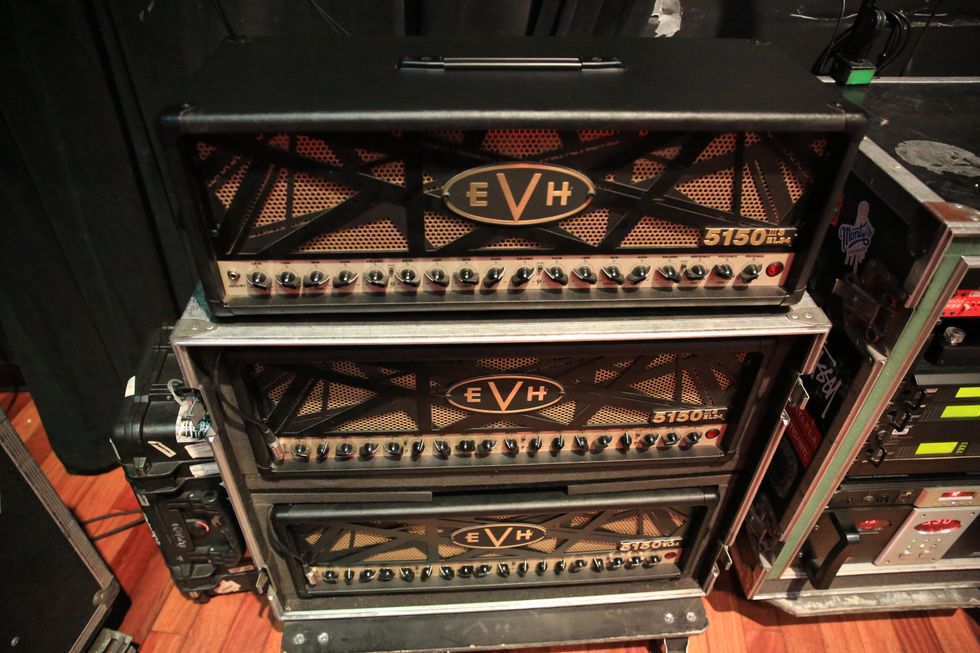
Ian says he’s gotten every EVH 5150 model since they debuted, and the EL34 tubes that stock his trio of heads provide his vision of the ultimate tone. “I mean, the first chord of the set, man, we hit that big E chord and go into ‘Among the Living’ … it makes me so happy,” he says of his hot-wired sound. “It sets the tone for the rest of the night. It’s literally pushing me in the back.” He plugs into the crunch channel, channel 2, and runs clean “but has that right amount of edge that makes it metal.”
Pedals x 3
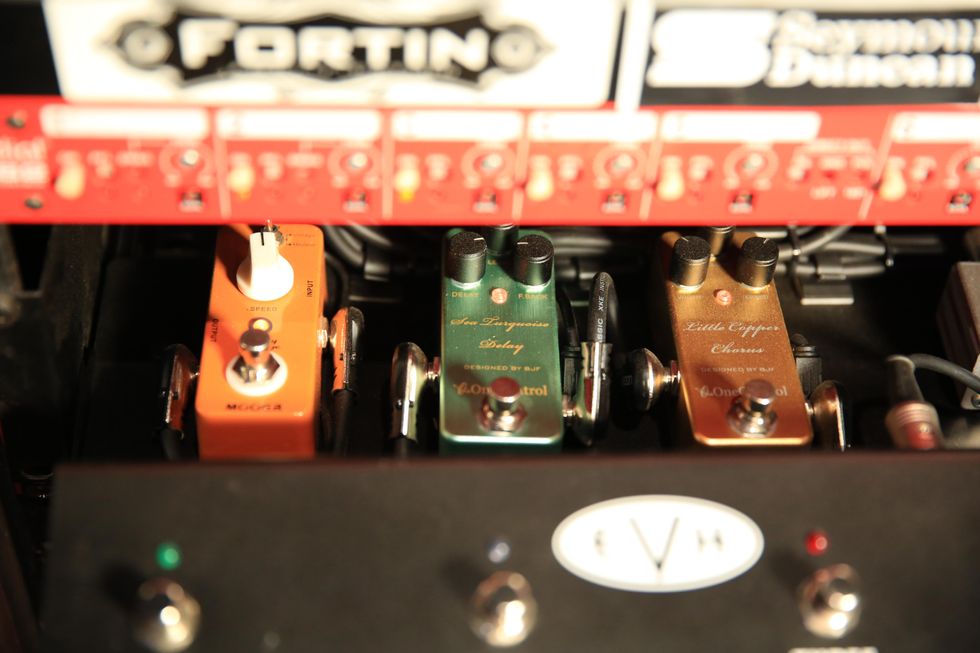
Ian keeps his stomps simple: a Mooer Ninety Orange phaser, a One Control Sea Turquoise Delay, a One Control Little Copper Chorus, and a Kirk Hammett KH95 Signature Cry Baby wah. Plus, a Fortin Zuul noise gate tames the snakes.
Donais’ Flames
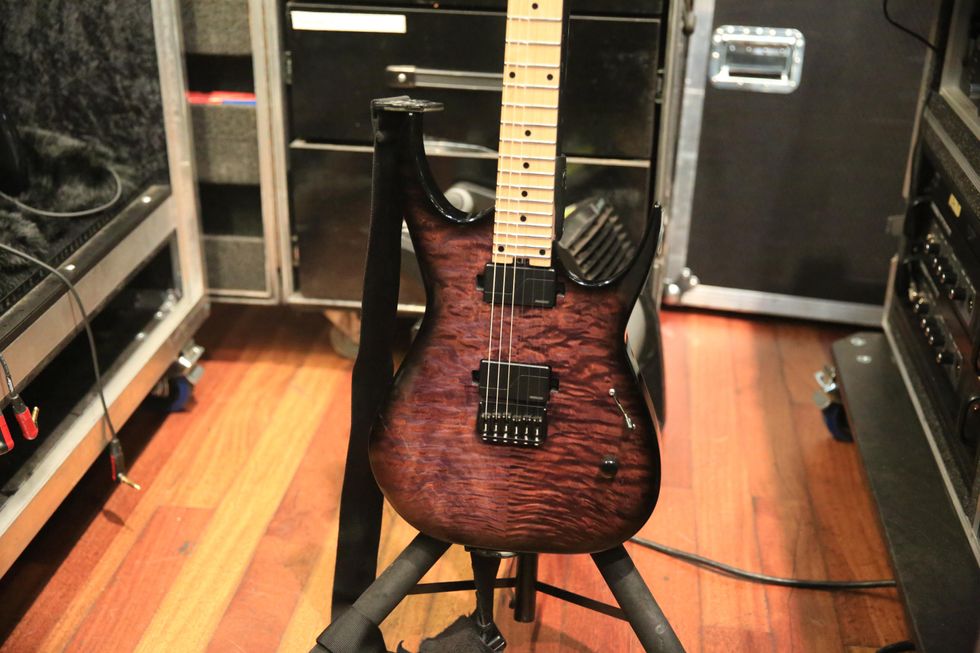
On the verge of his 10th anniversary with Anthrax, Jon Donais is laying it down with his new Dean Markley signature Exile-style, with a mahogany body, Fishman Fluence Modern pickups, a 5-piece flame maple neck with a thin C profile, a USA Hipshot bridge, a quilted maple top, and 24 frets. For now, they’re only available by order from Dean’s Custom Shop, but Donais is hoping for a production model in 2023. His picks are Dunlop Tortex Sharps, and his strings are … surprising. For standard tuning, he uses DR .008 sets and DR 009s for E-flat standard.
Profiles in Heavy
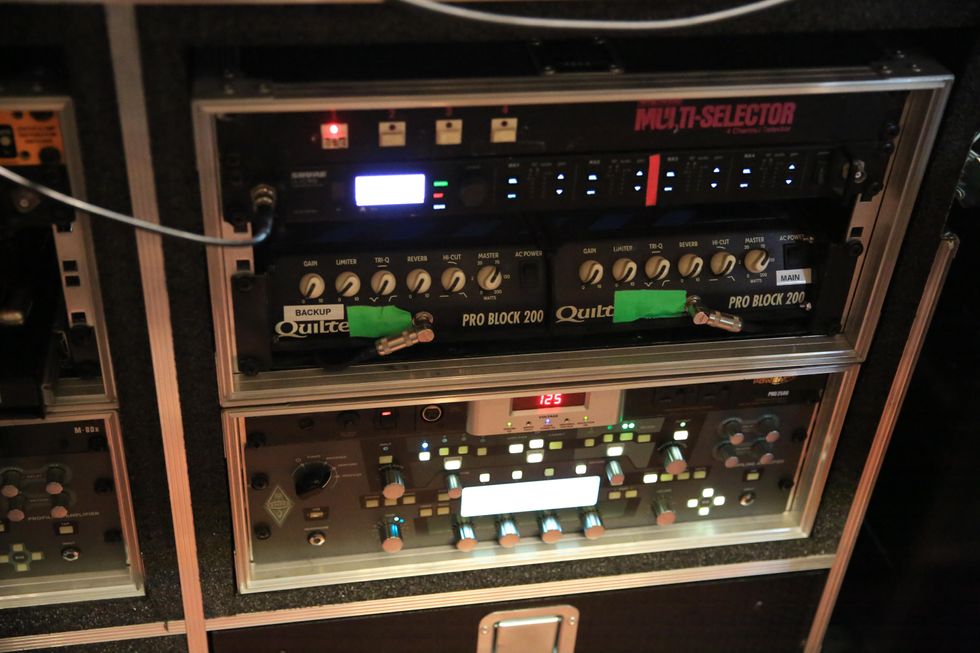
Donais’ setup is streamlined. He uses only three stock Rivera and ENGL patches in his Kemper Profiler, plus a Fortin Zuul noise gate and an Ibanez TS9 Tube Screamer “for just a little extra.”
Frank’s No. 1!
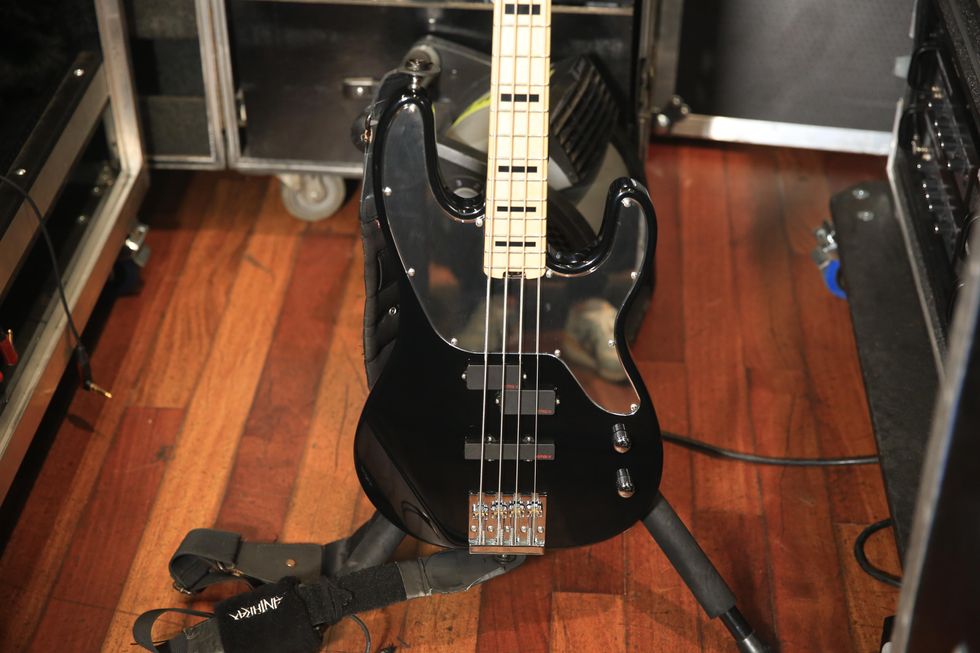
Frank Bello is Charvel’s first bass-playing signature artist, and had a blast showing off his new Pro-Mod So-Cal PJIV. The 4-string has a poplar body, a bolt-on maple neck, a 12"-16" compound radius, black block inlays, 20 jumbo nickel frets, a brass nut (for extra sustain), and a 34" scale, with a Charvel HiMass bridge and a pair of his signature EMG pickups. While Bello plays a custom shop model, a production version is also available. The mirrored pickguard is Bello’s tribute to Thin Lizzy’s Phil Lynott. And the pickups are a P/J setup, which has always been his preference. The controls are just two volumes, because, Bello says, “the tone should always be there.” His strings: D’Addario .045–.105 sets.
Hartke Punch
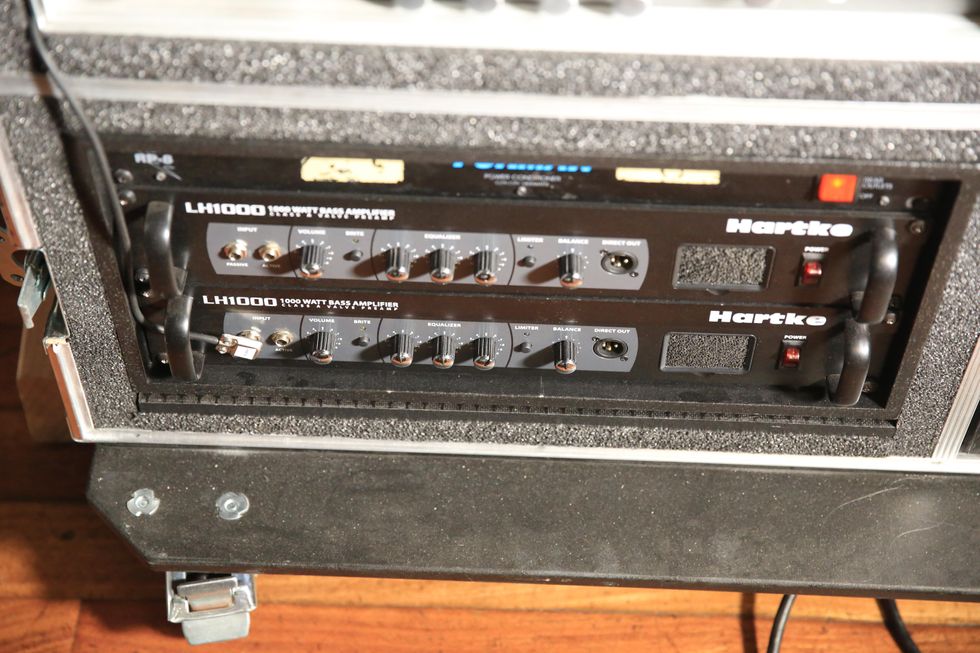
Bello rolls with a pair of Hartke LH1000s with matched aluminum-cone Hartke 4x12s. “I’ve been with them for a long time,” he says. “If it ain’t broke, don’t fix it.”
State of Bello’s Stomps
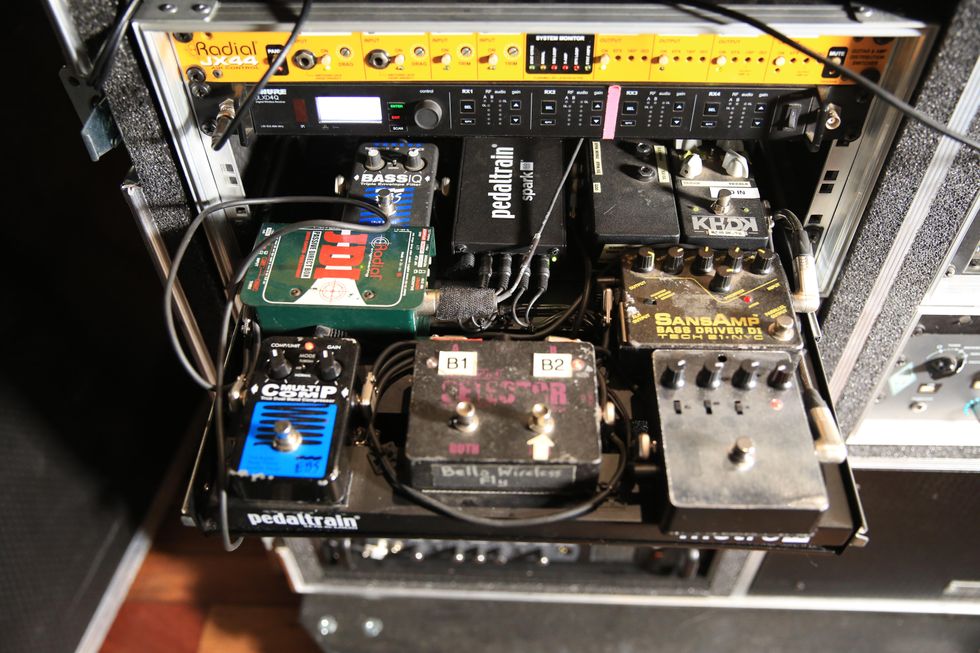
That box with no markings? It’s Bello’s new pedal from Tech 21—still unnamed and still in development. “It’s like a SansAmp on steroids,” he says. Also aboard the ’board: a Tech 21 SansAmp Bass Driver, an EBS MultiComp and BassIQ Triple Envelope Filter, and switching devices.
![Rig Rundown: Anthrax [2022]](https://www.premierguitar.com/media-library/rig-rundown-anthrax-2022.jpg?id=31536810&width=1200&height=675)

![Rig Rundown: AFI [2025]](https://www.premierguitar.com/media-library/youtube.jpg?id=62064741&width=1245&height=700&quality=70&coordinates=0%2C0%2C0%2C0)

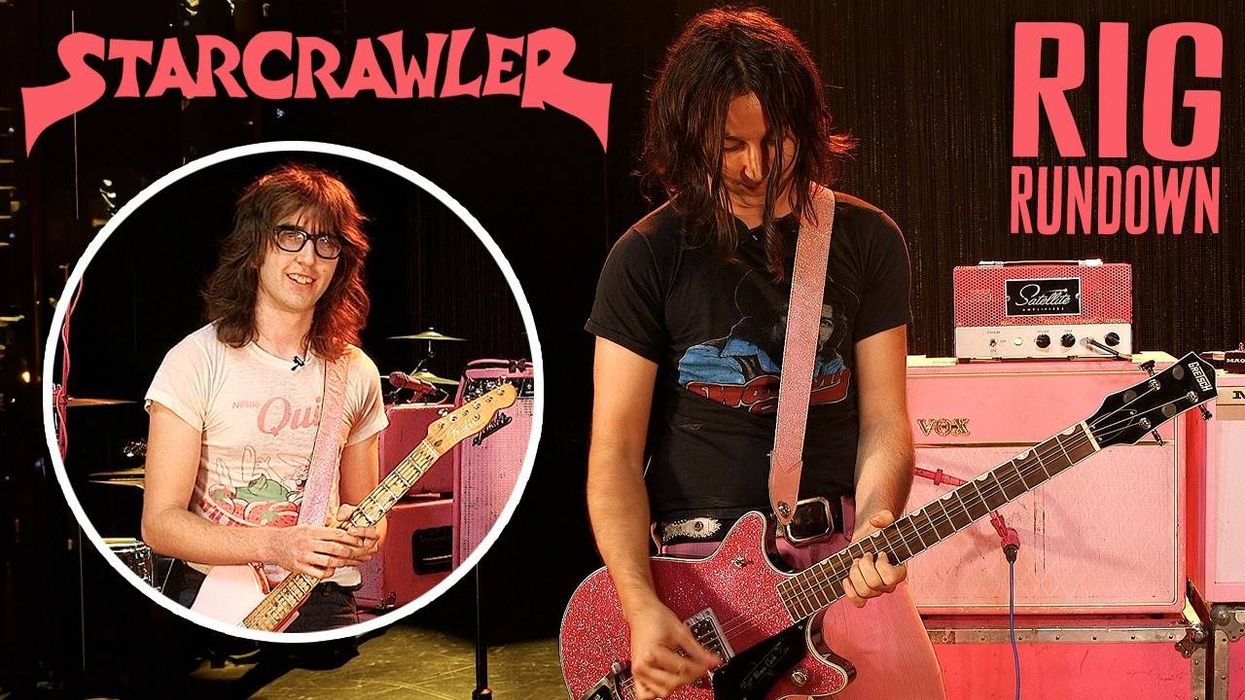
![Devon Eisenbarger [Katy Perry] Rig Rundown](https://www.premierguitar.com/media-library/youtube.jpg?id=61774583&width=1245&height=700&quality=70&coordinates=0%2C0%2C0%2C0)
